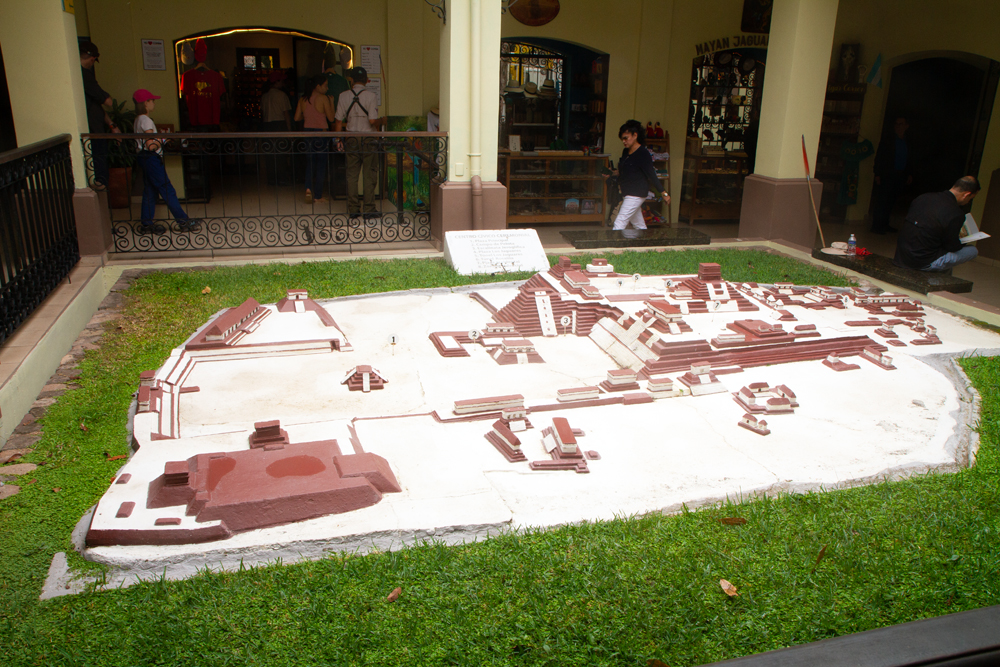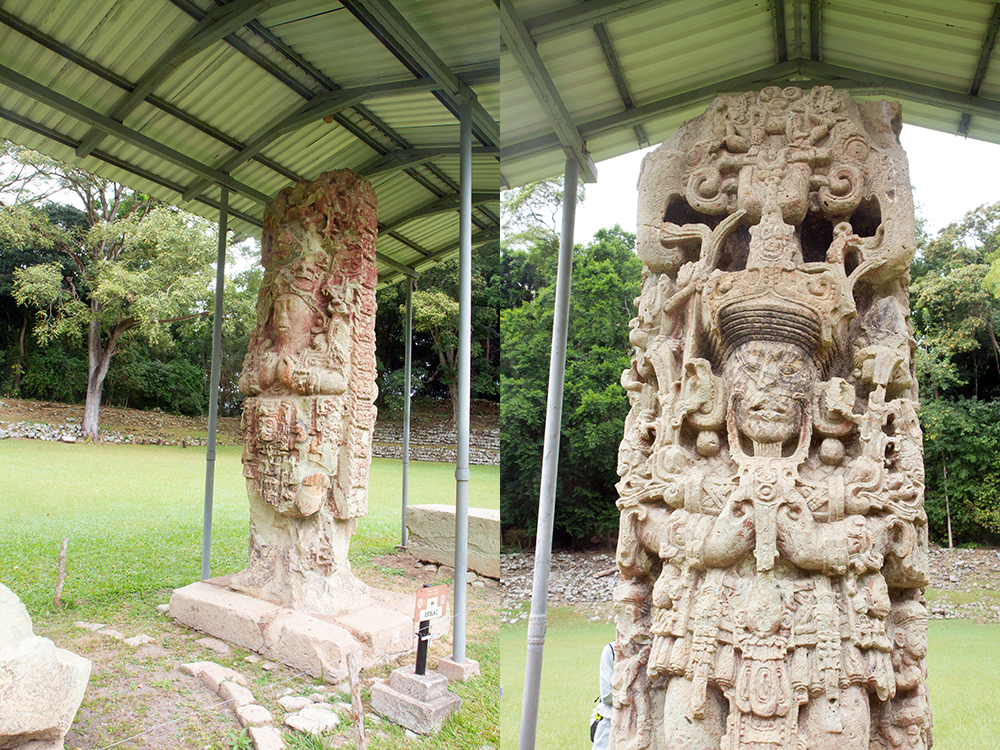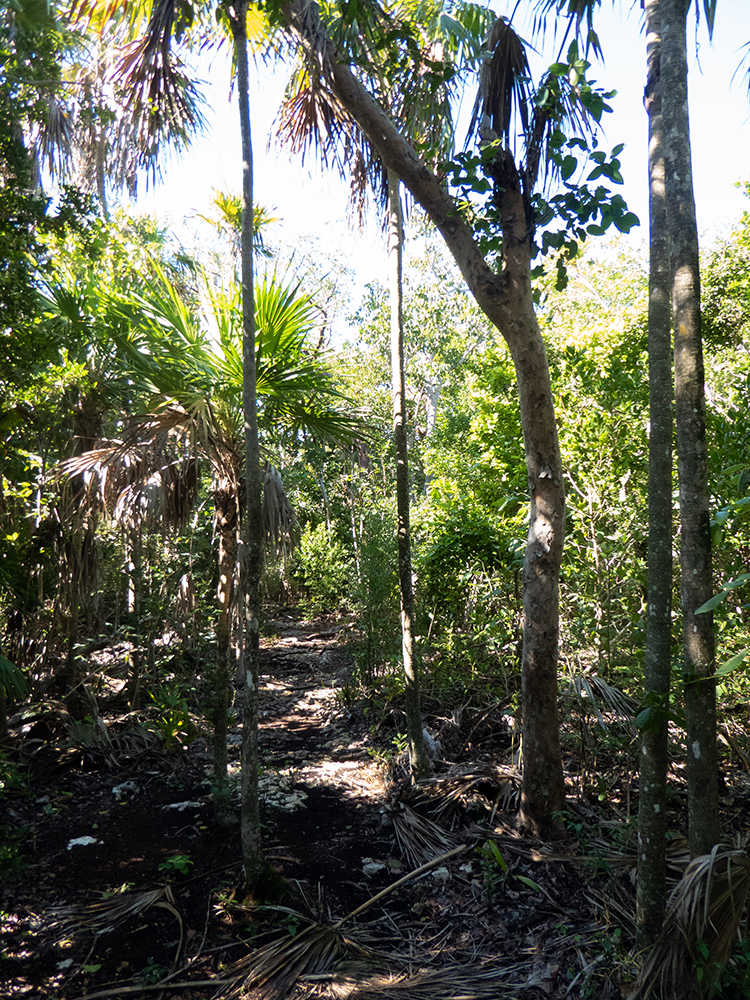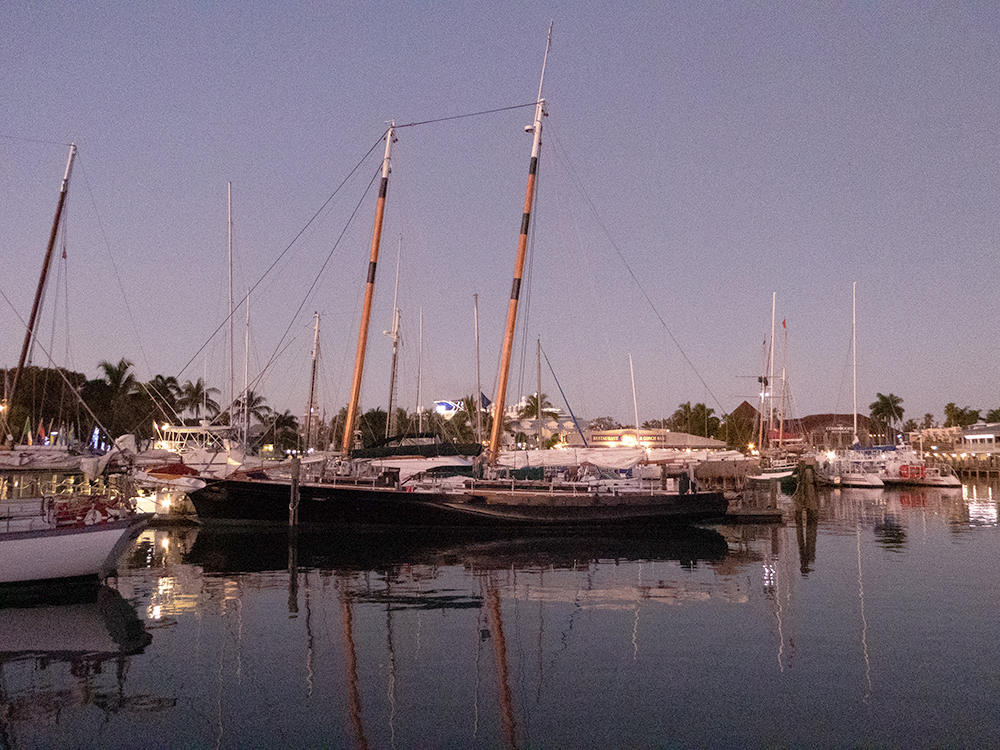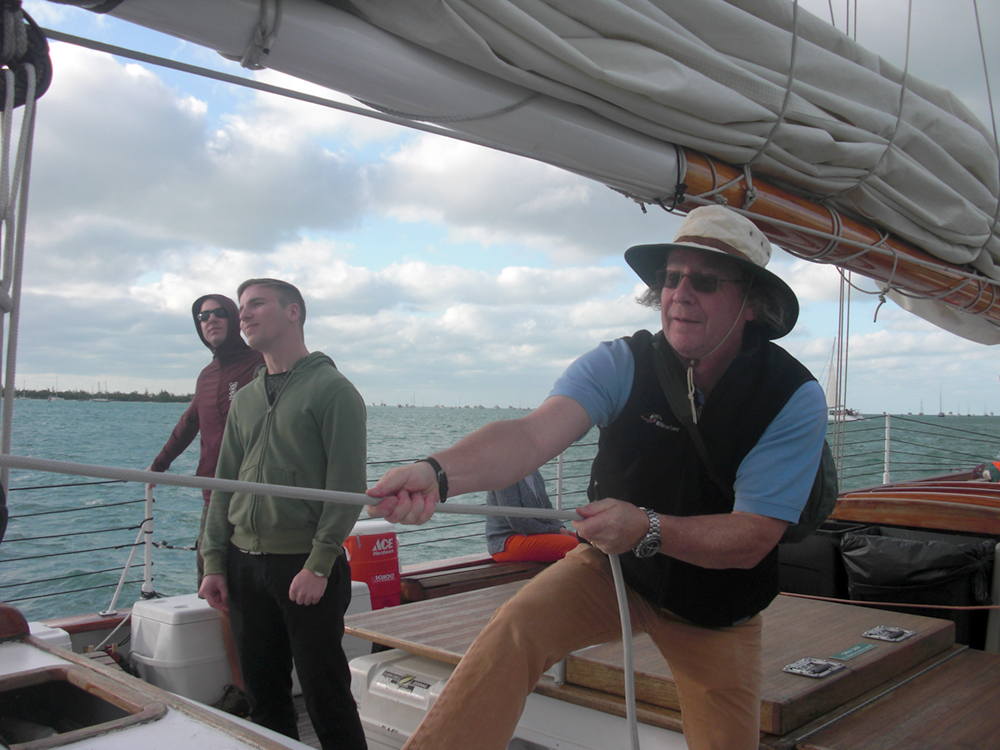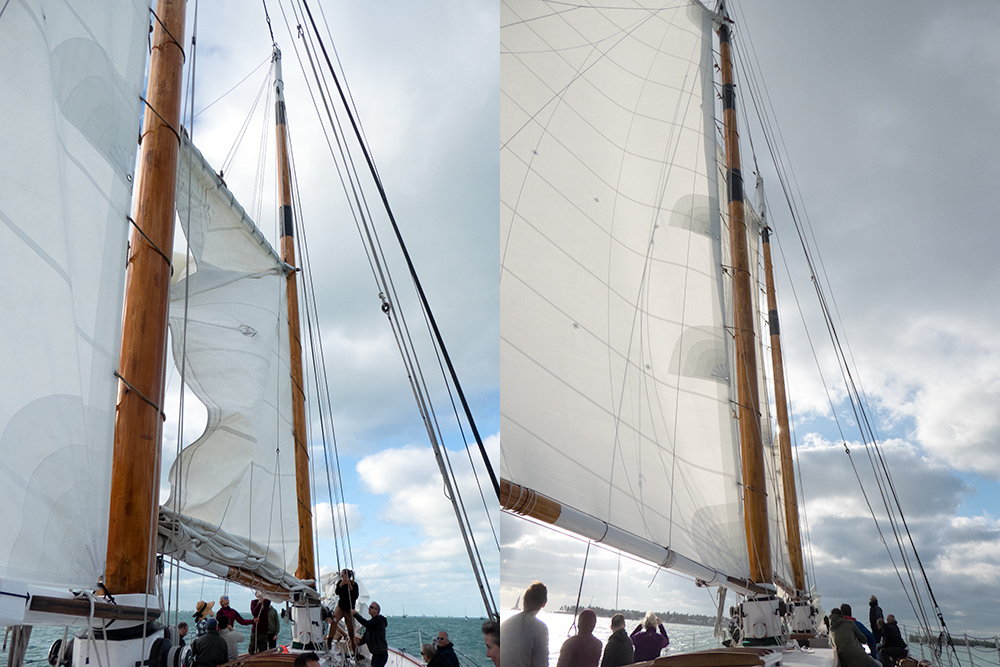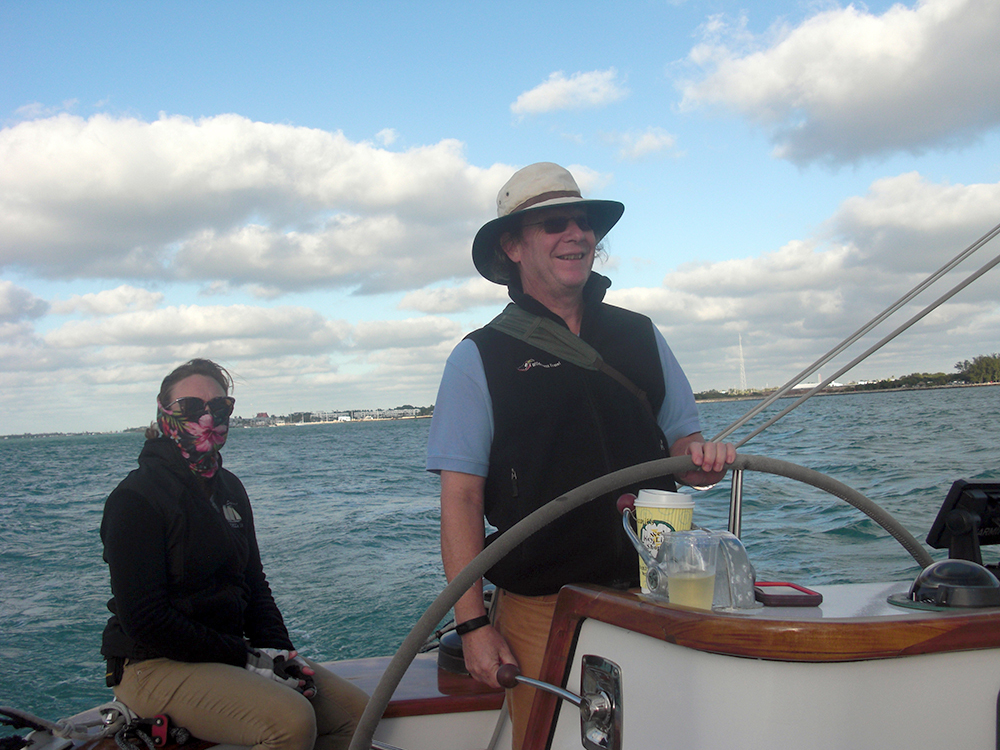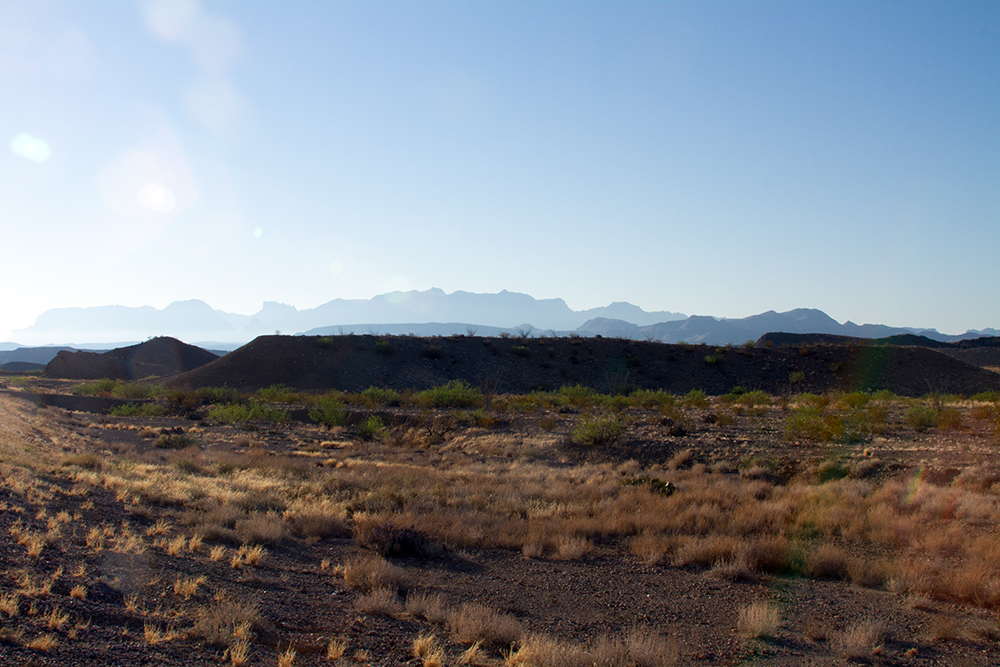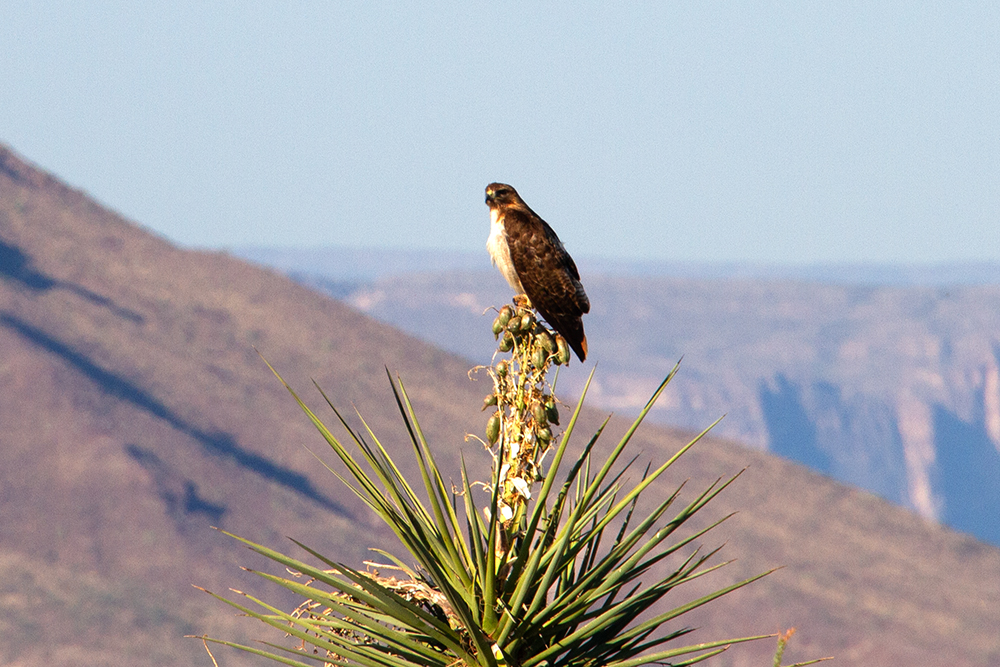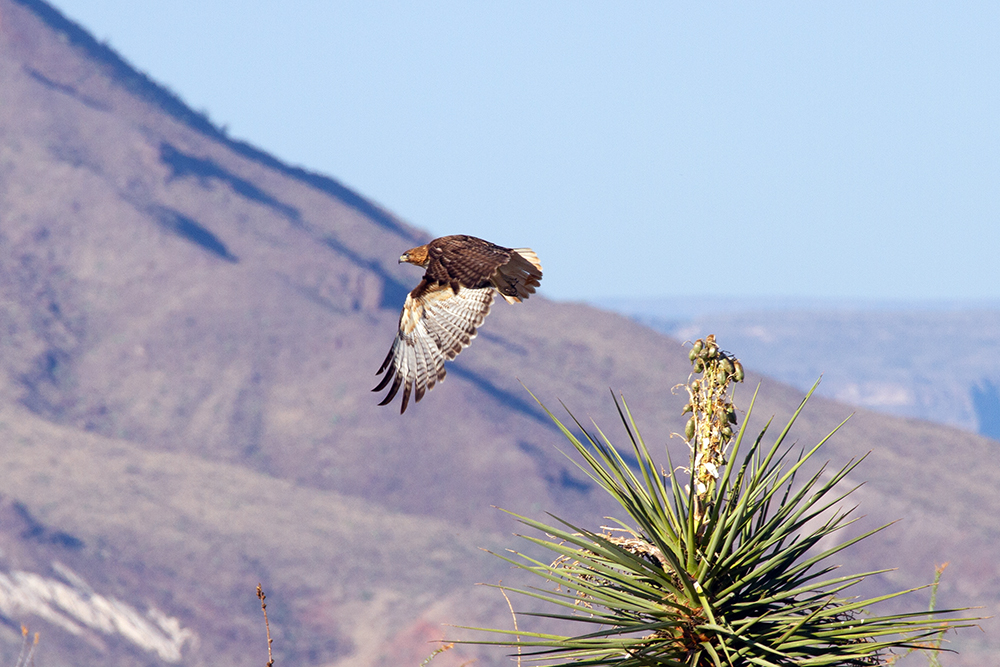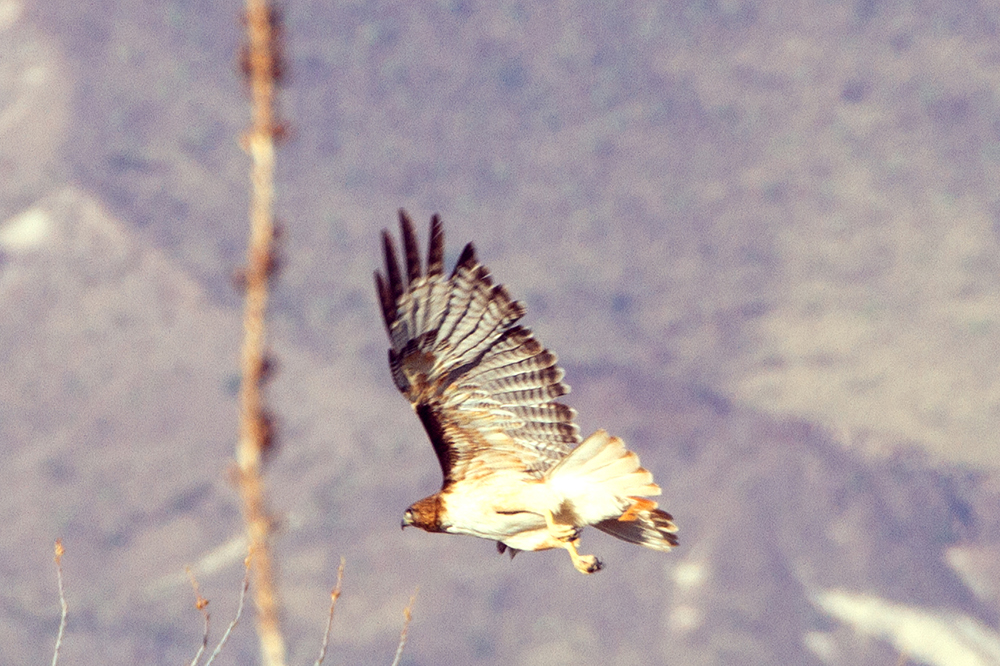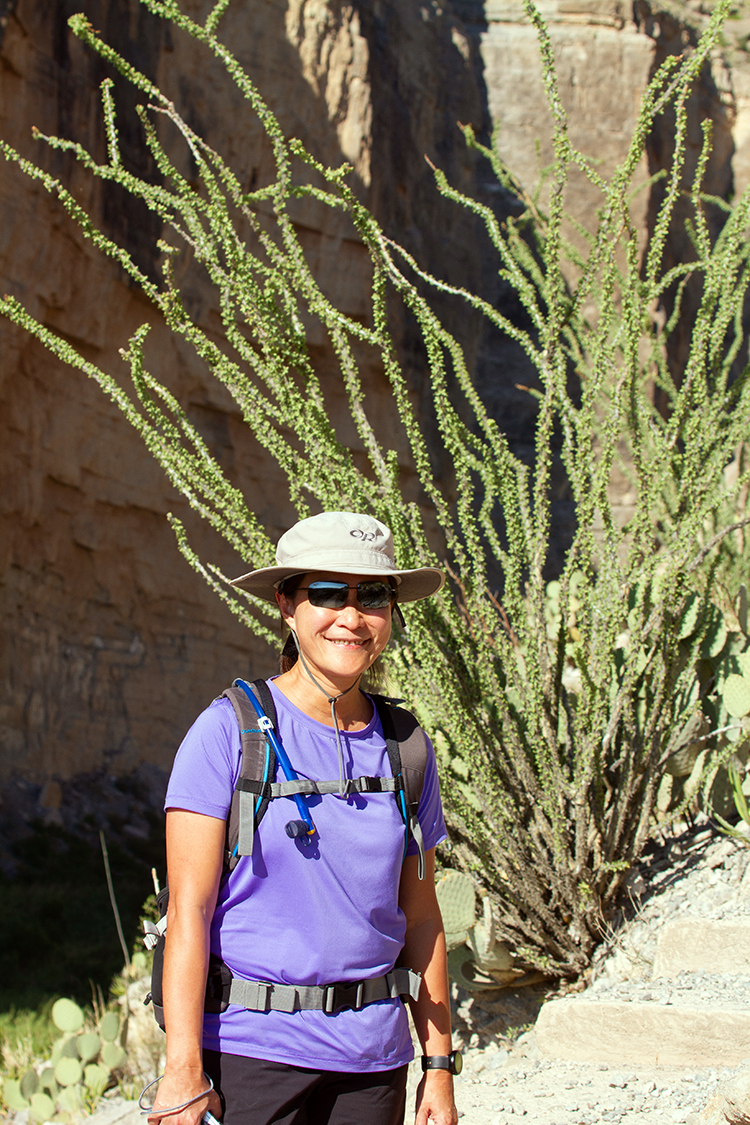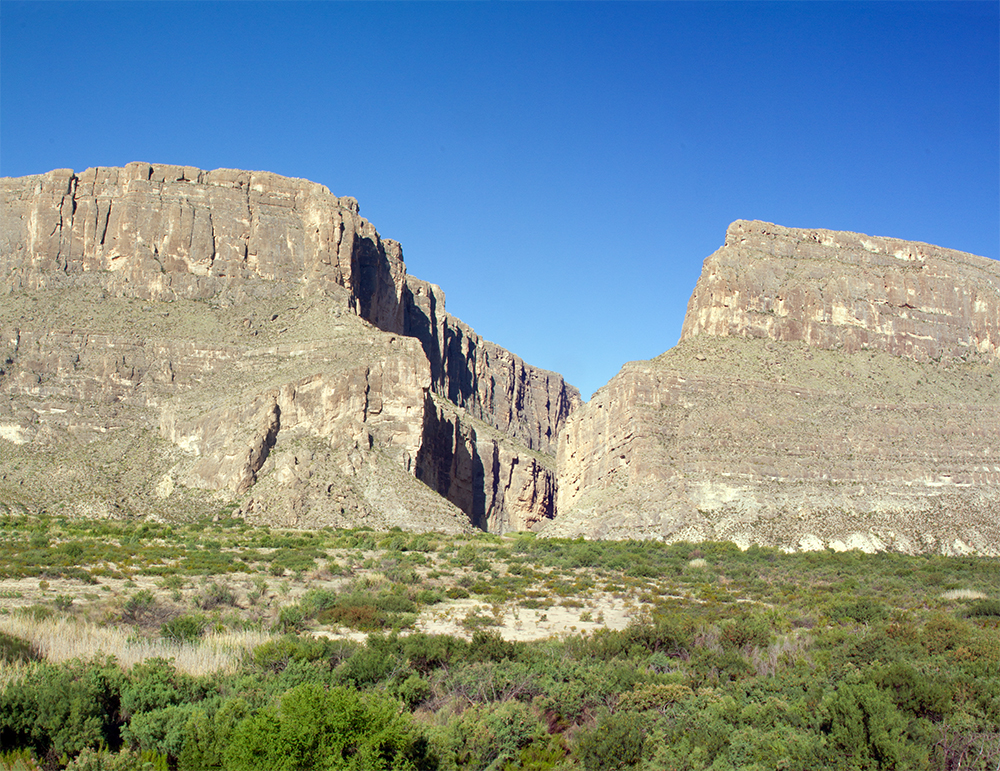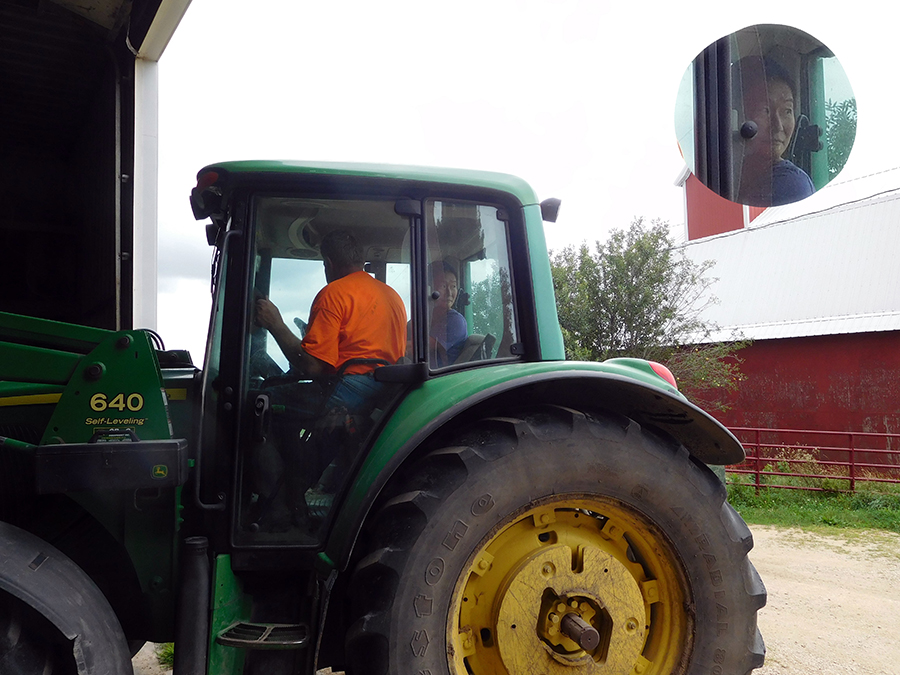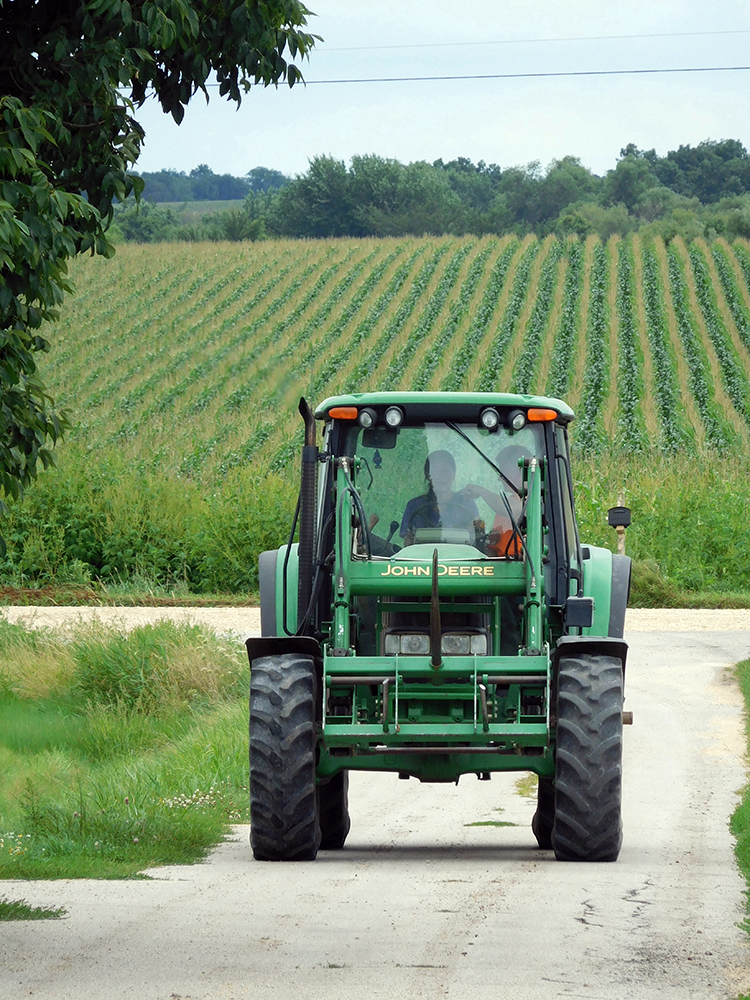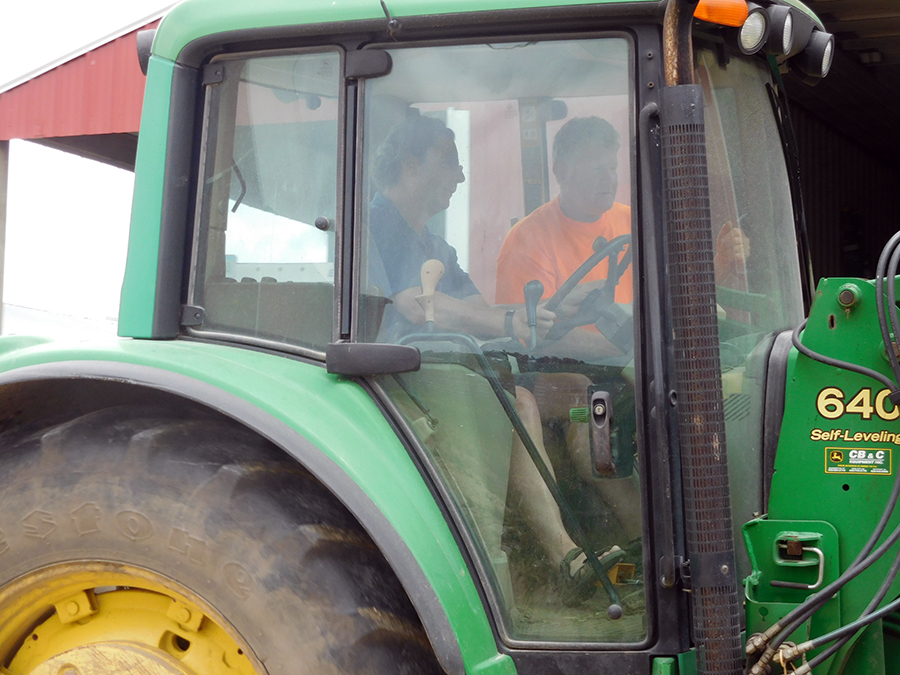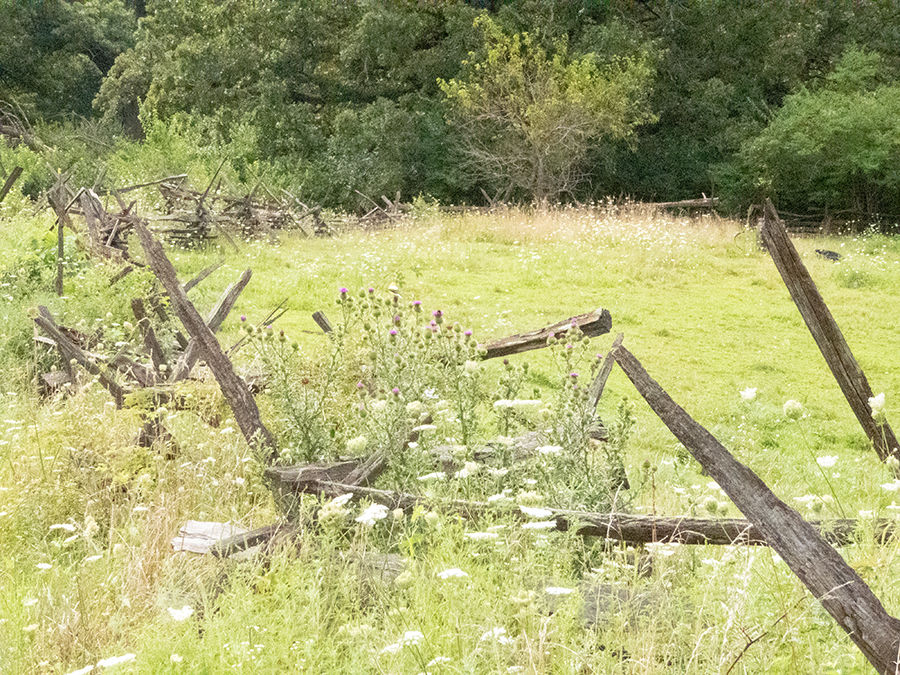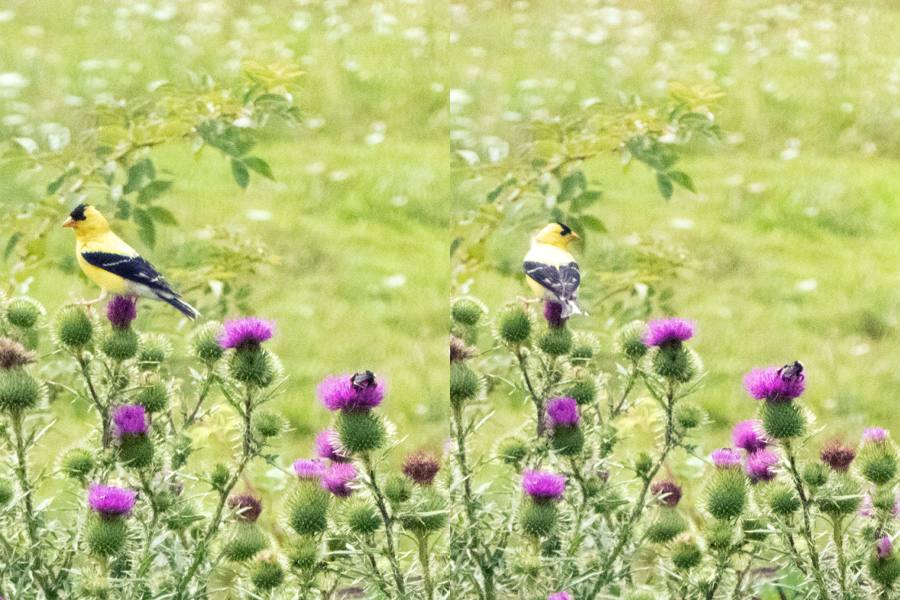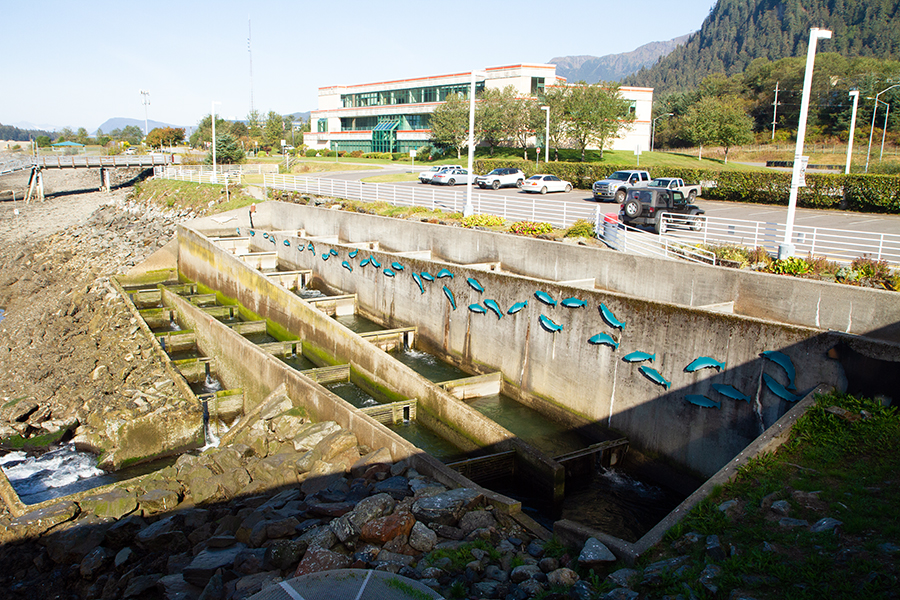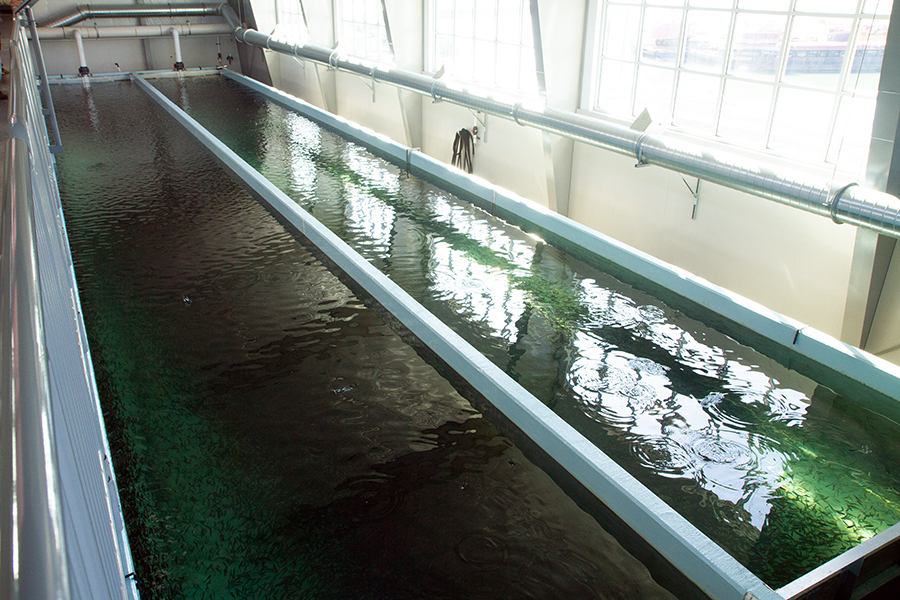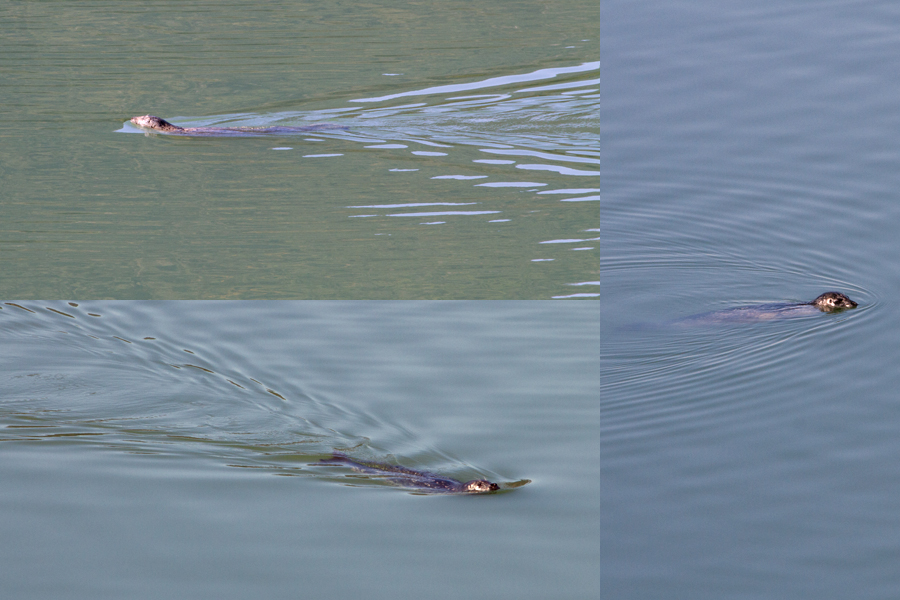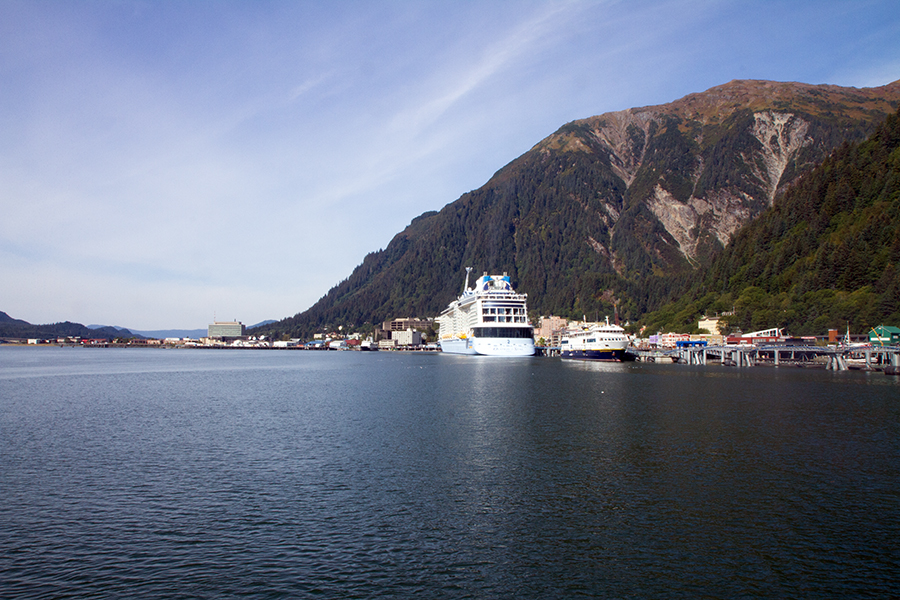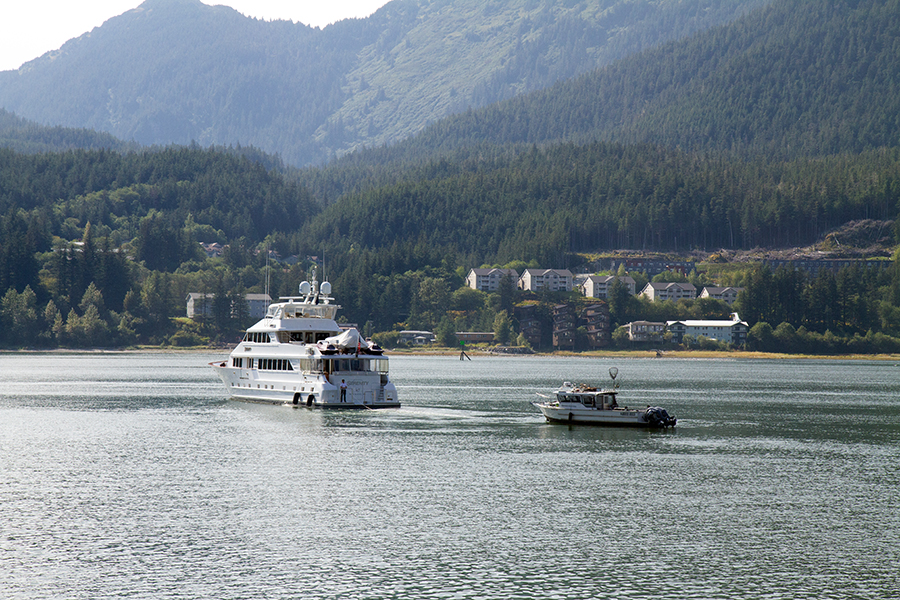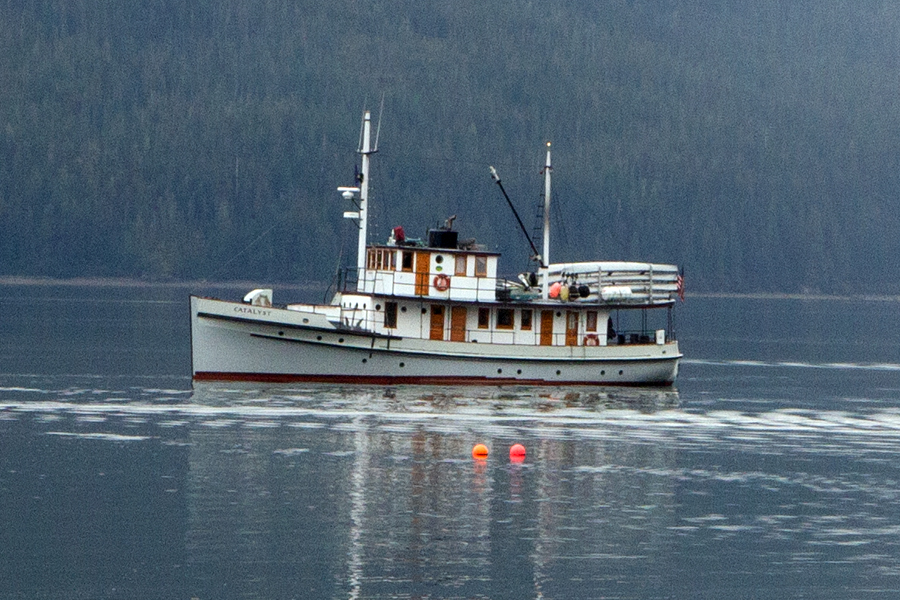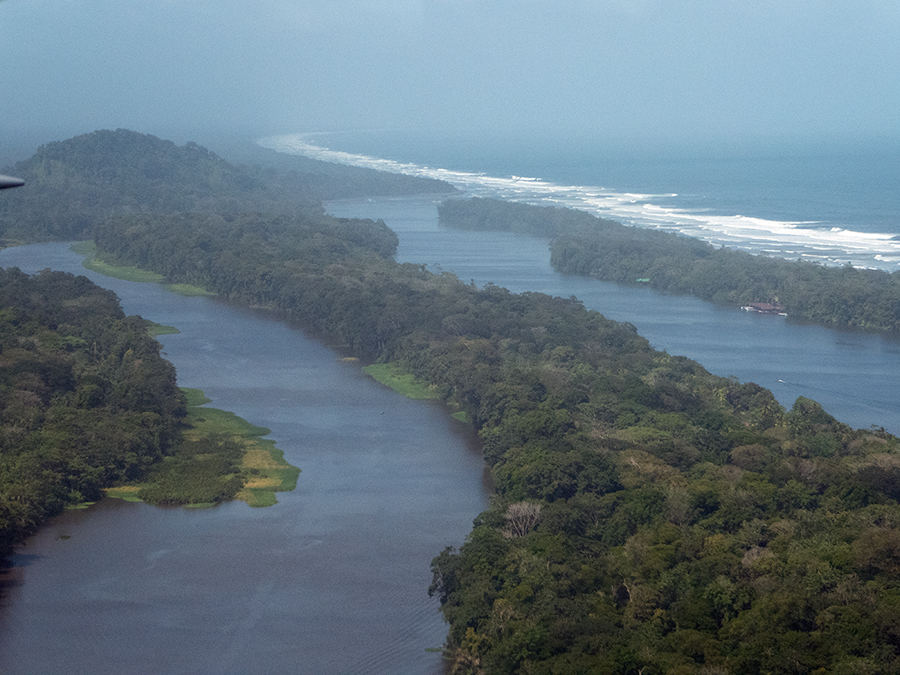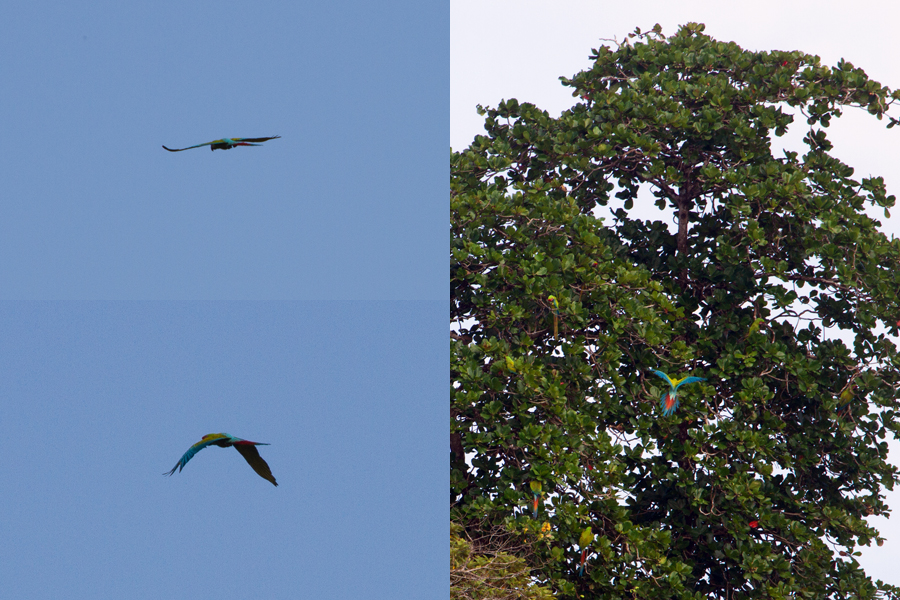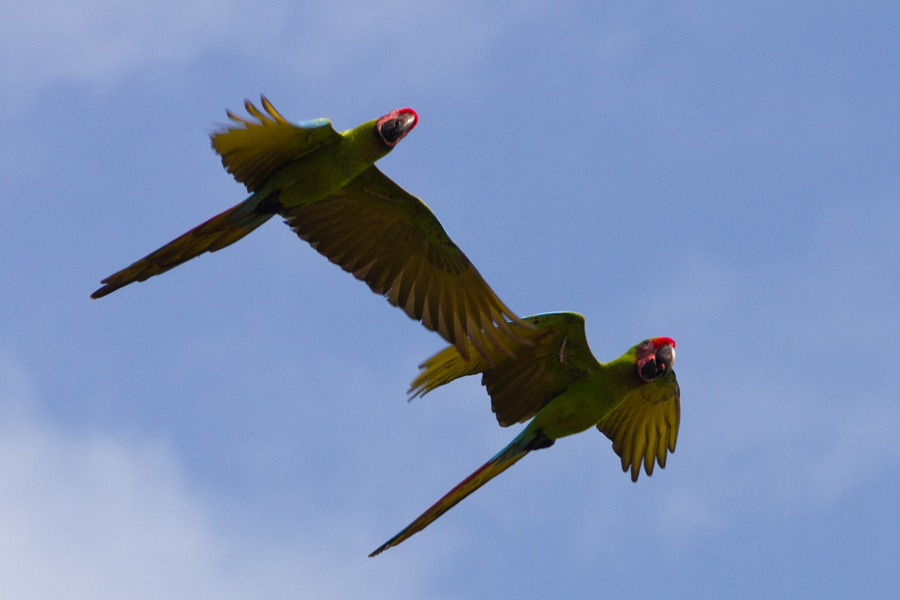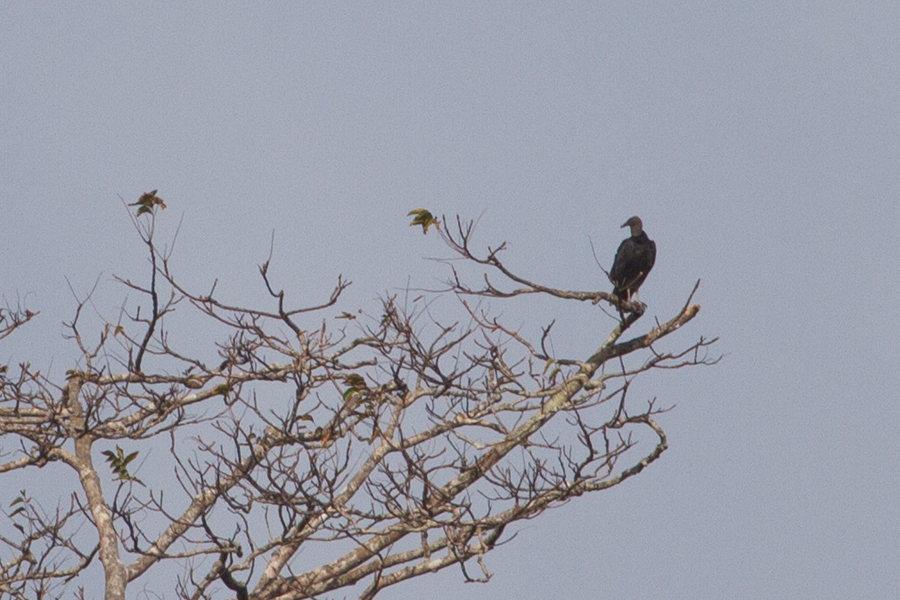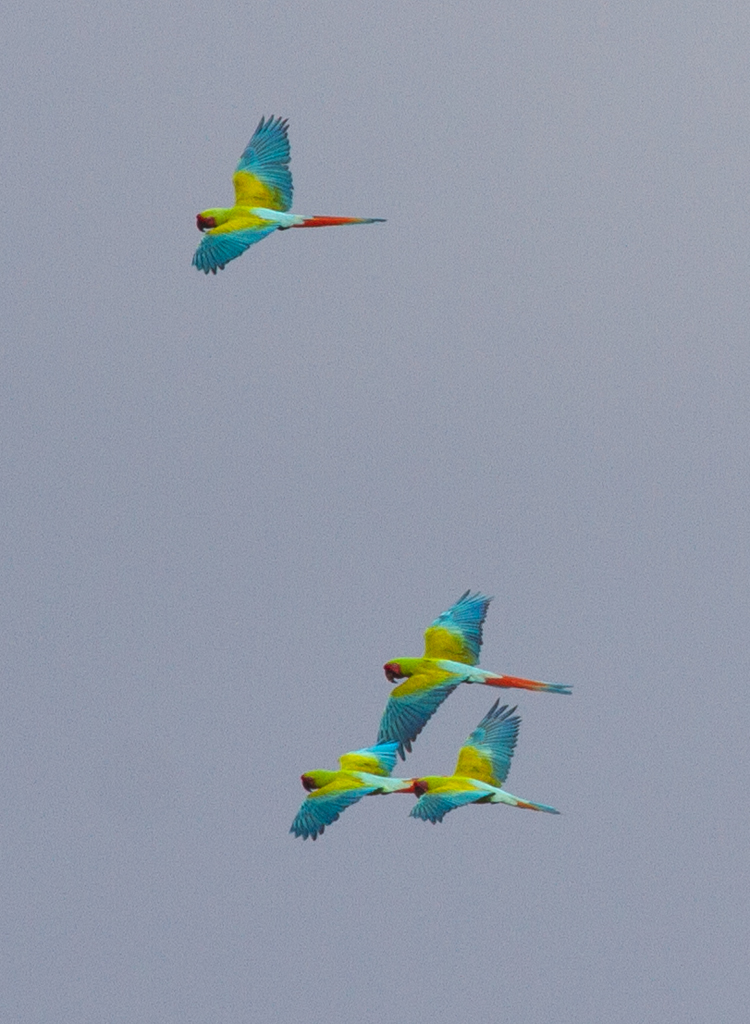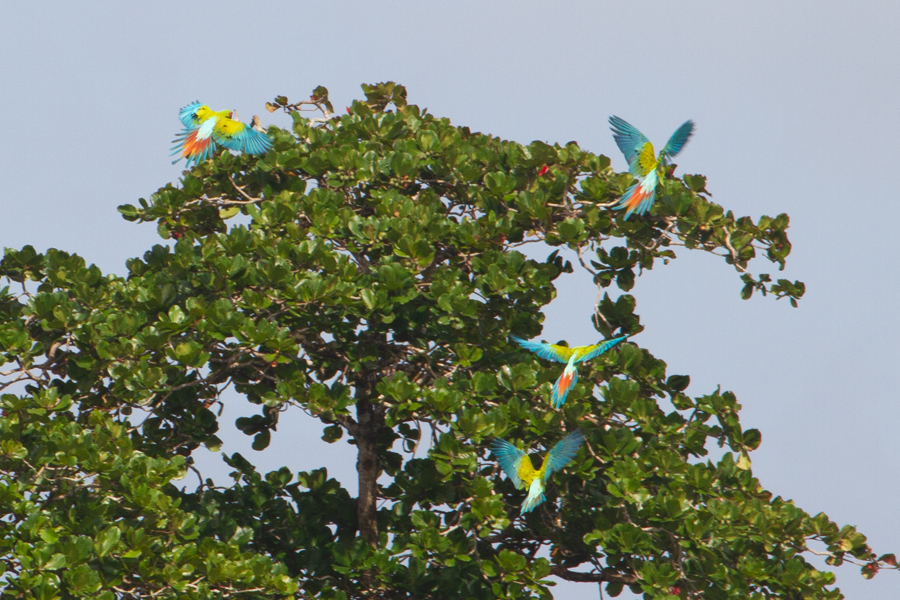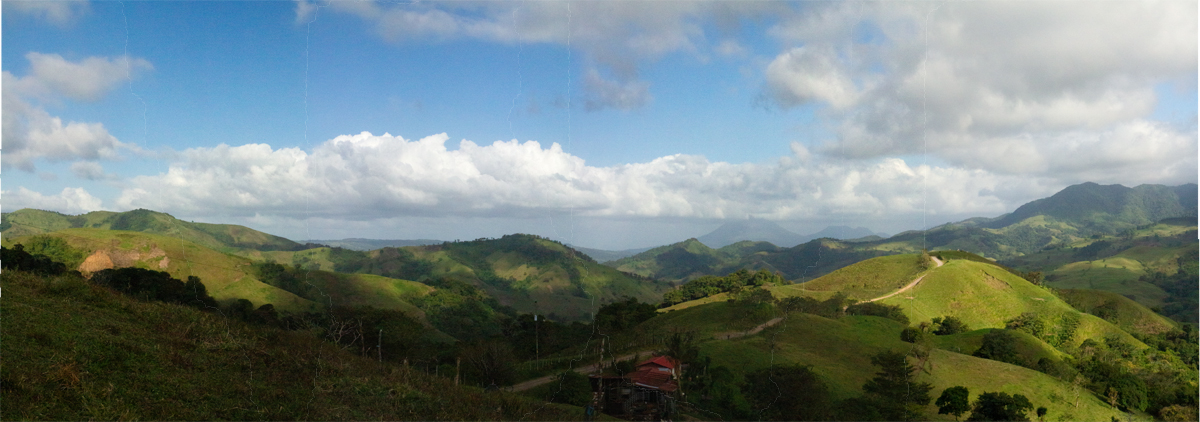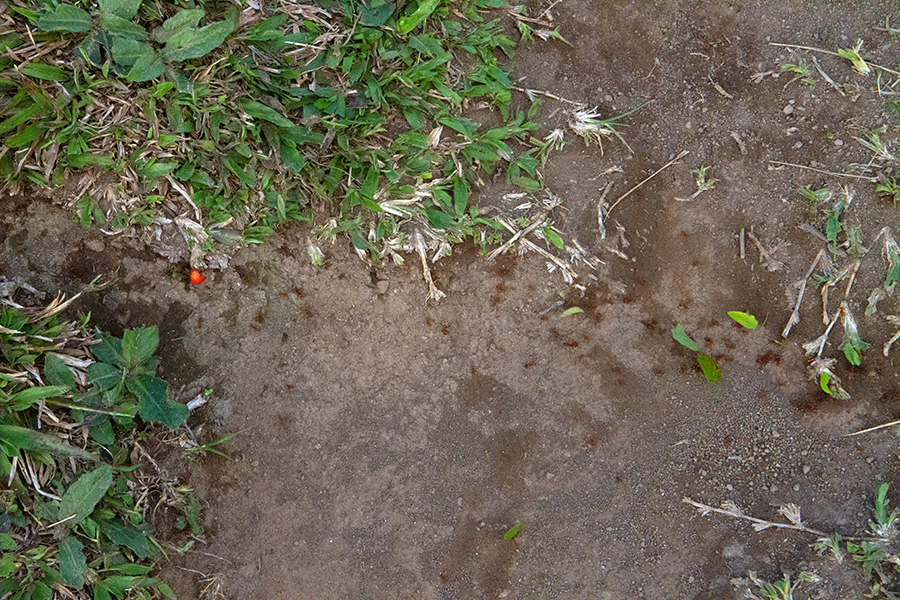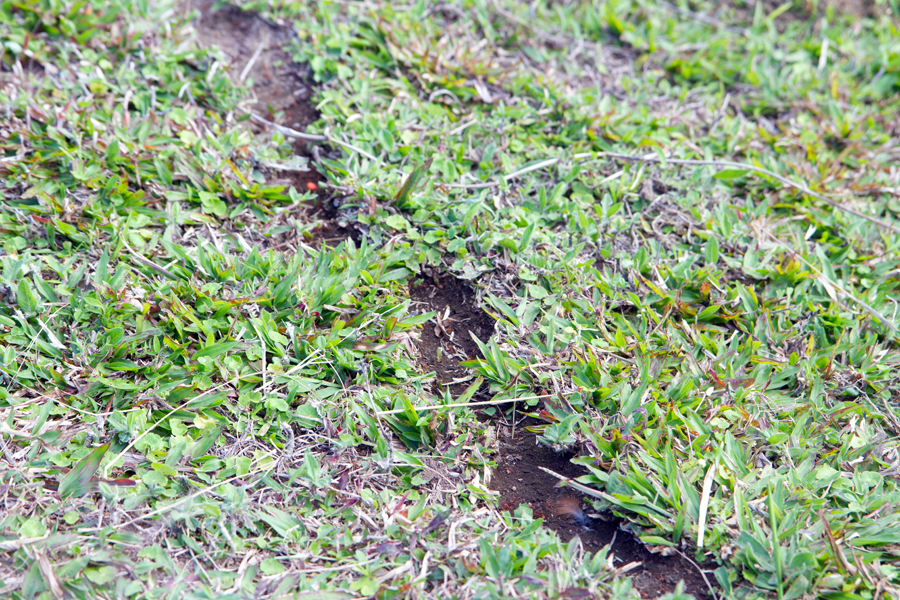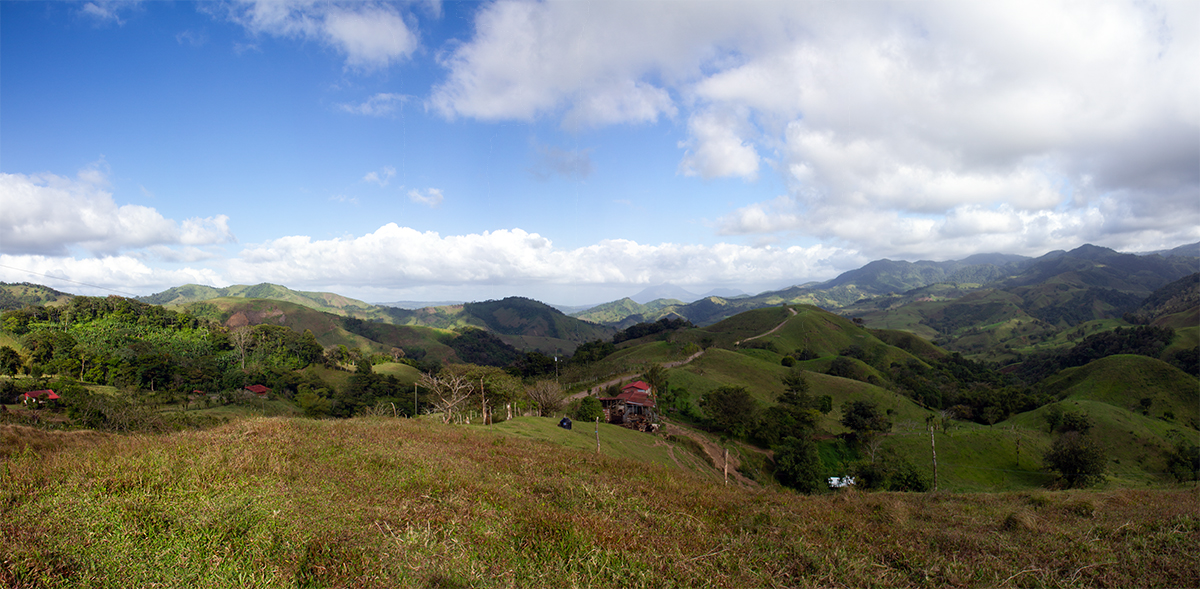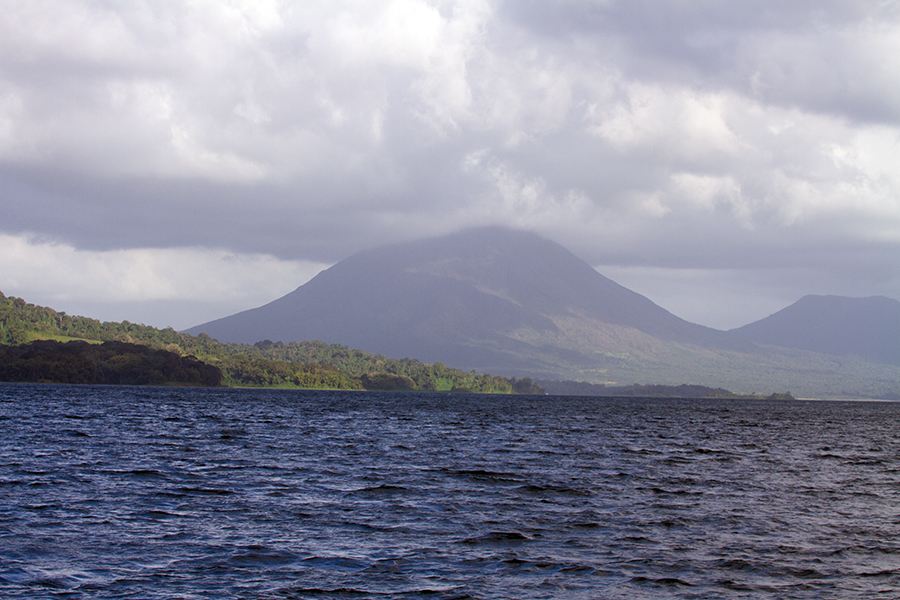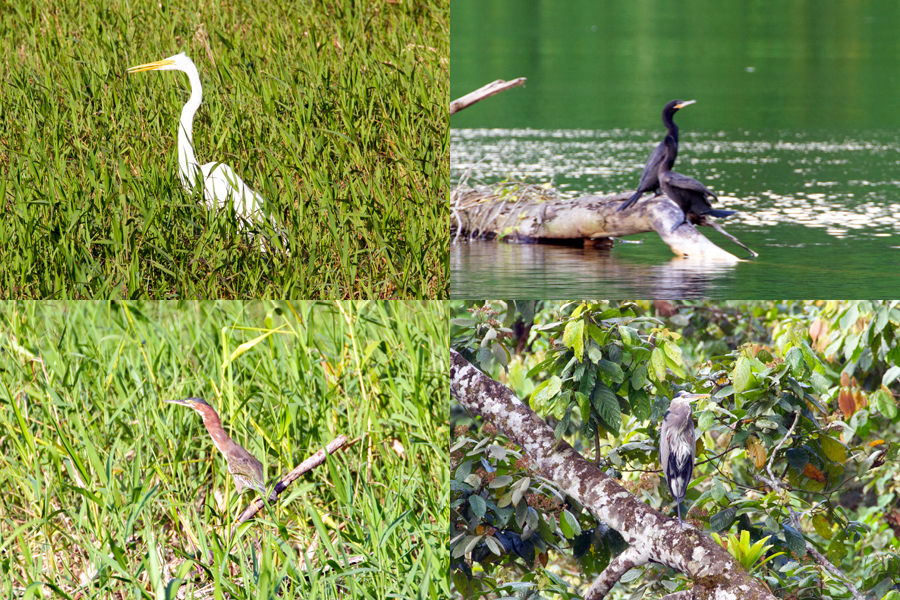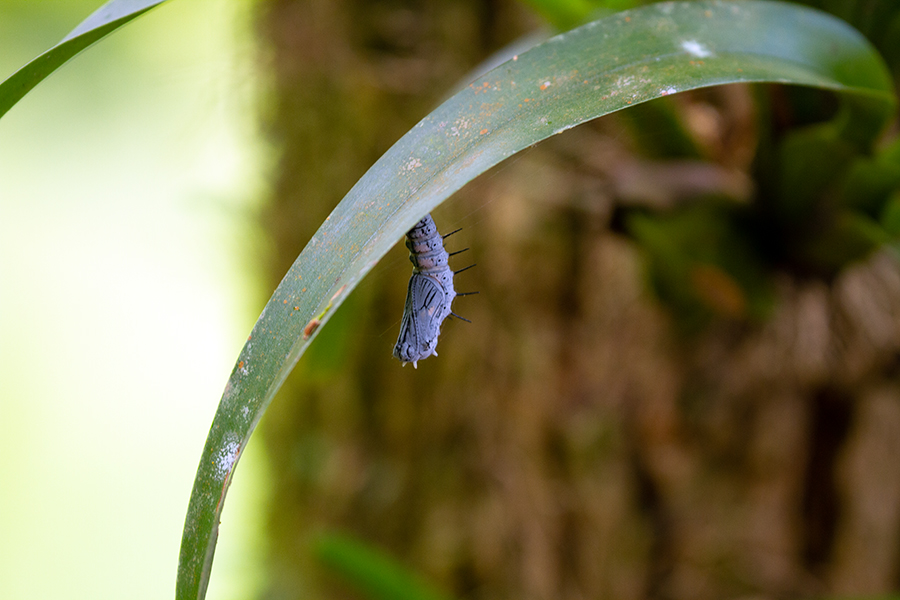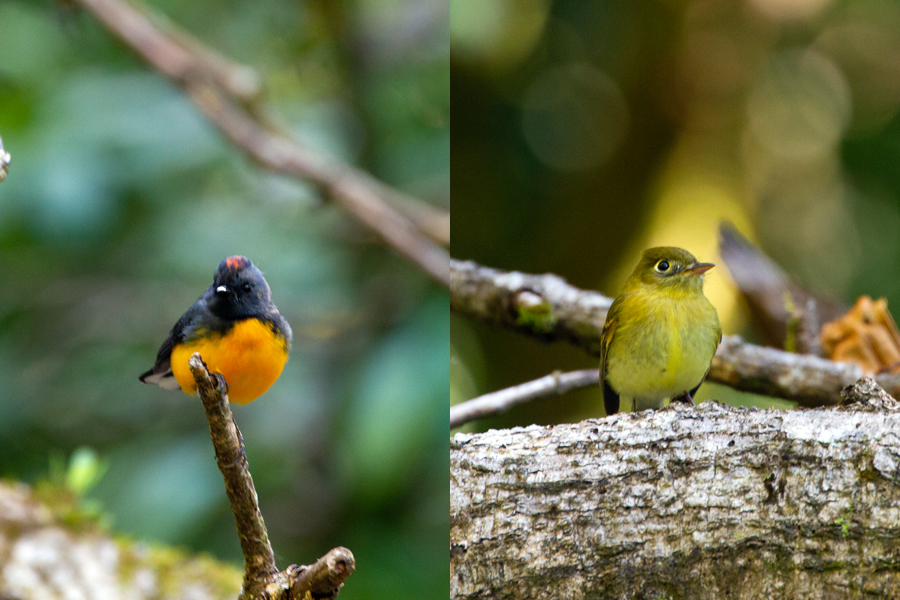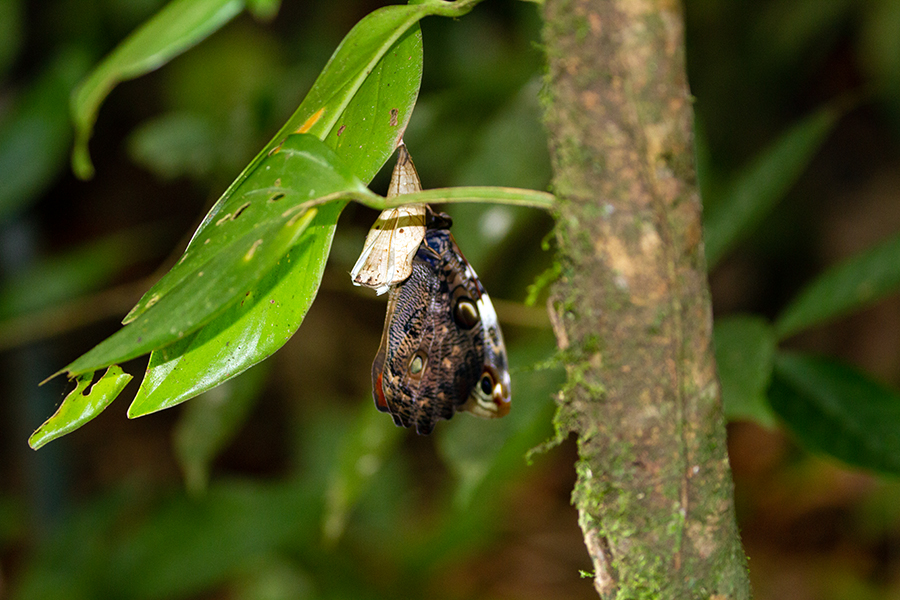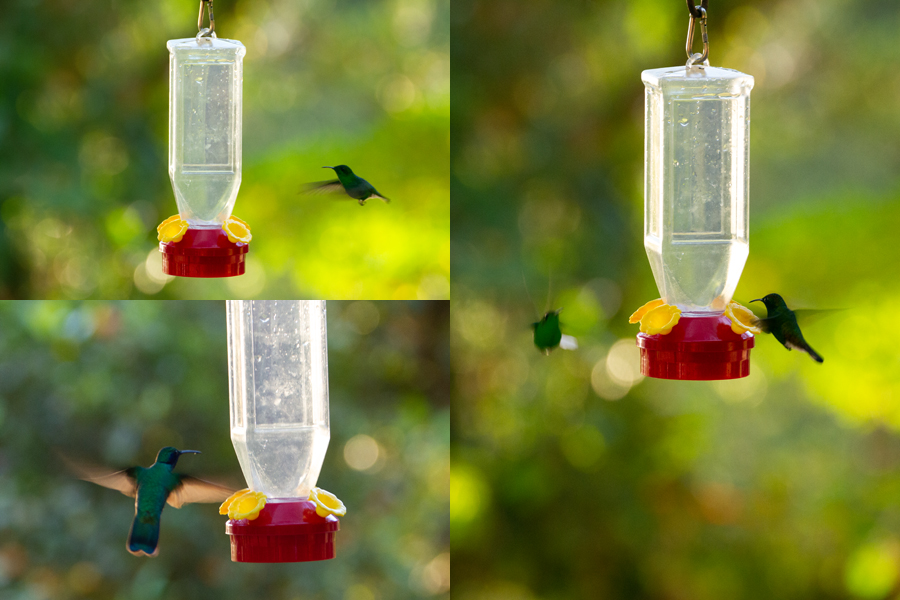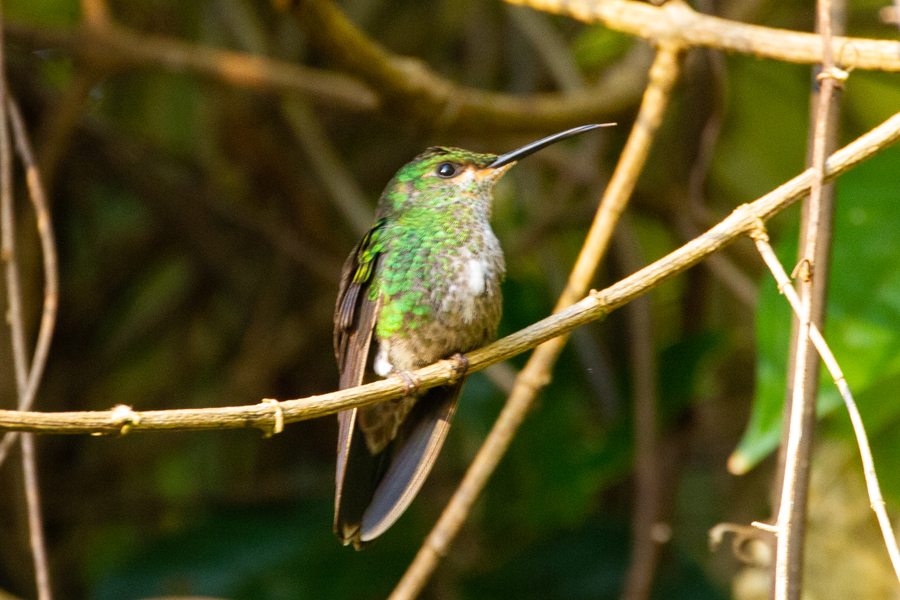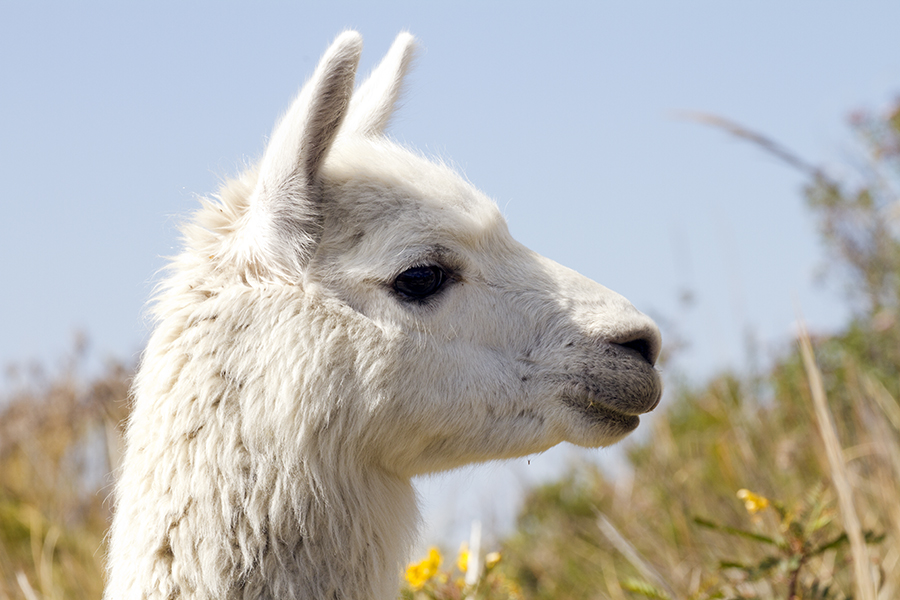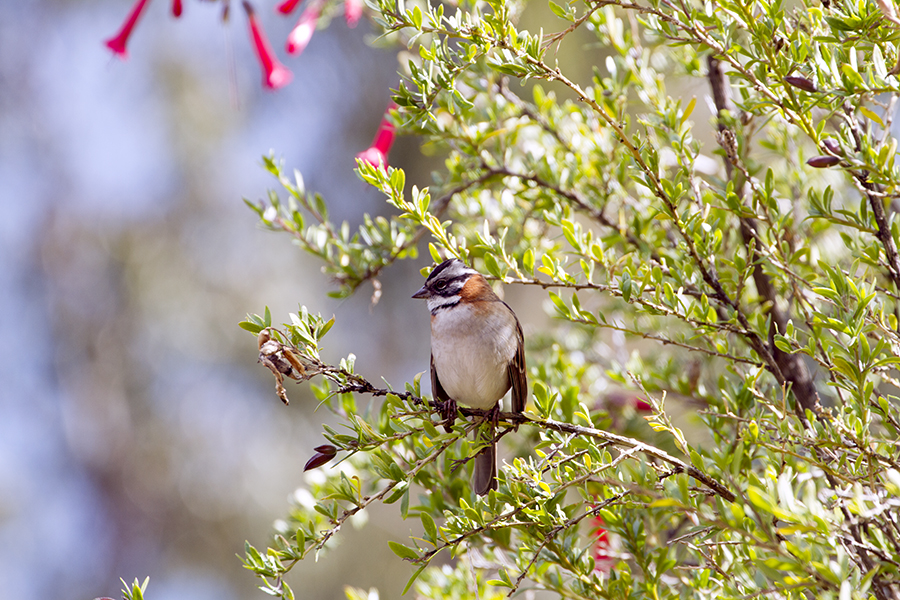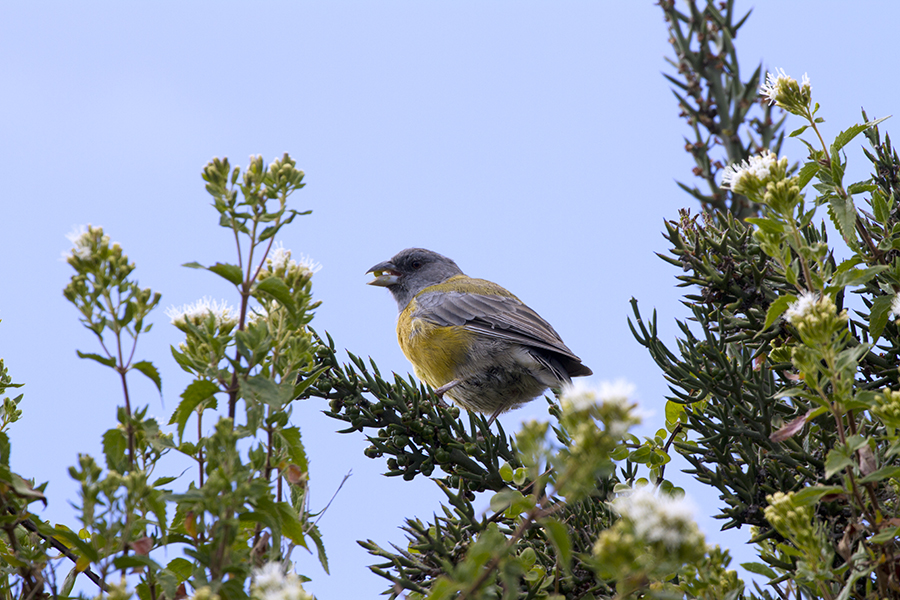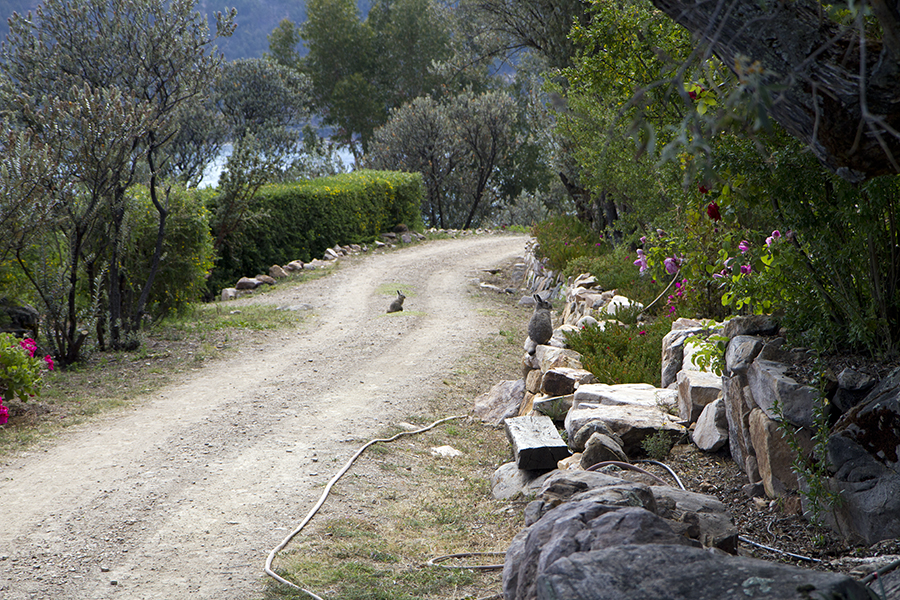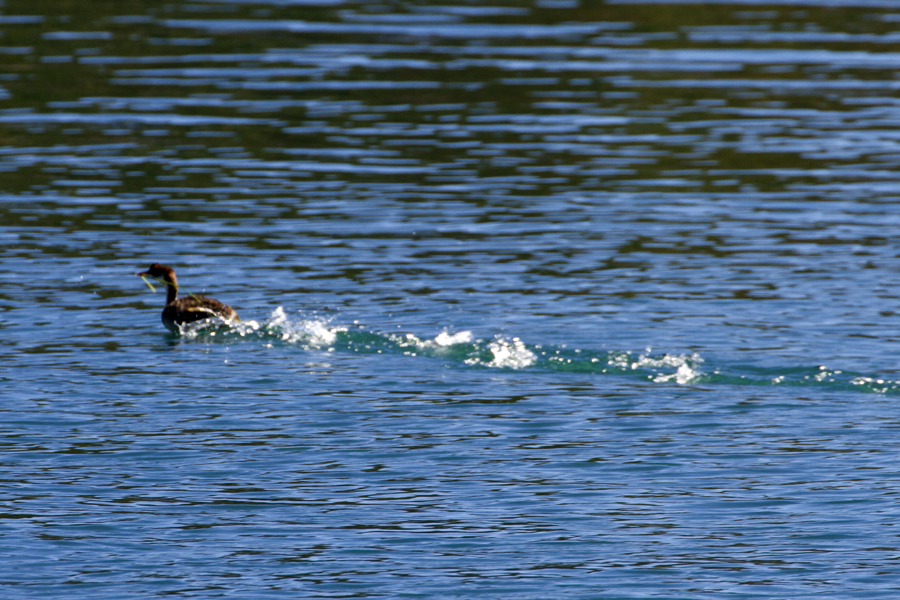Here we are again. Preparation for this one has taken less time that the last episode as I already had most photos selected, and the weather in Belgium has been much worse than earlier, giving me more indoor time. However, much travel around Christmas, New Year and later in January delayed again final publication, so this one too is late!
I left you in suspense right at the entrance to the ruins of Machu Picchu, the entrance that is used only by those who have completed the Inca Trail. Out of 2000 visitors allowed per day to enter Machu Picchu, less than 150 come in this way.
And here is the view that was immediately offered to us.
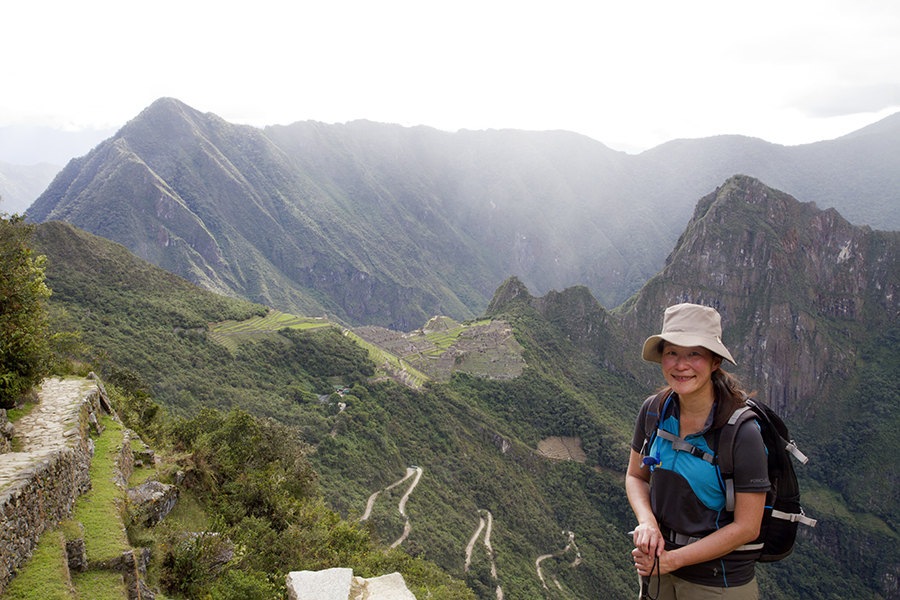
We are still quite a long way from the main portions of the ruins and you can see the road that leads to the main entrance – several switch-backs that end near a building with green roof that blends quit well into the scenery. After coming down, we have to take the “typical” photo from a slab that overlooks perfectly the whole site. It is mid-afternoon and we are tired and dirty and will have a whole day in the ruins tomorrow so we go to our hotel, right at the main entrance, and relax for the evening.
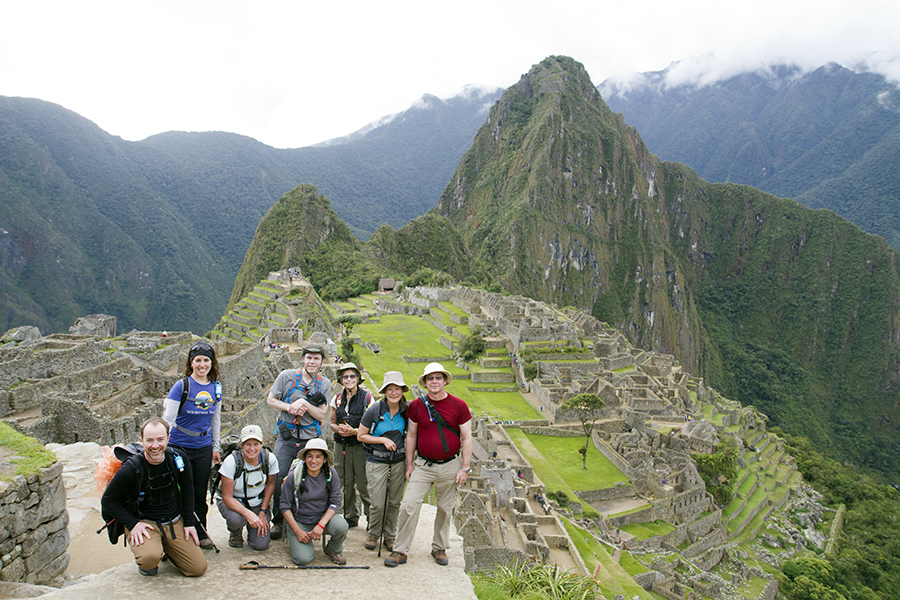
The next morning, Bee and I are up early in order to catch the sunrise on the ruins. We wait in line with about 200 other people just before opening at 6AM. Most of them have had to climb up from Agua Caliente, where most hotels are located. The first bus to make the ascent arrives just after 6AM and therefore if you want to make it in early, you need to climb. We were privileged as all we had to do was walk 100 m from our hotel to the entrance.
Unfortunately, the weather is not the best and the ruins are covered in clouds as we get to the vantage point we had selected the day before.
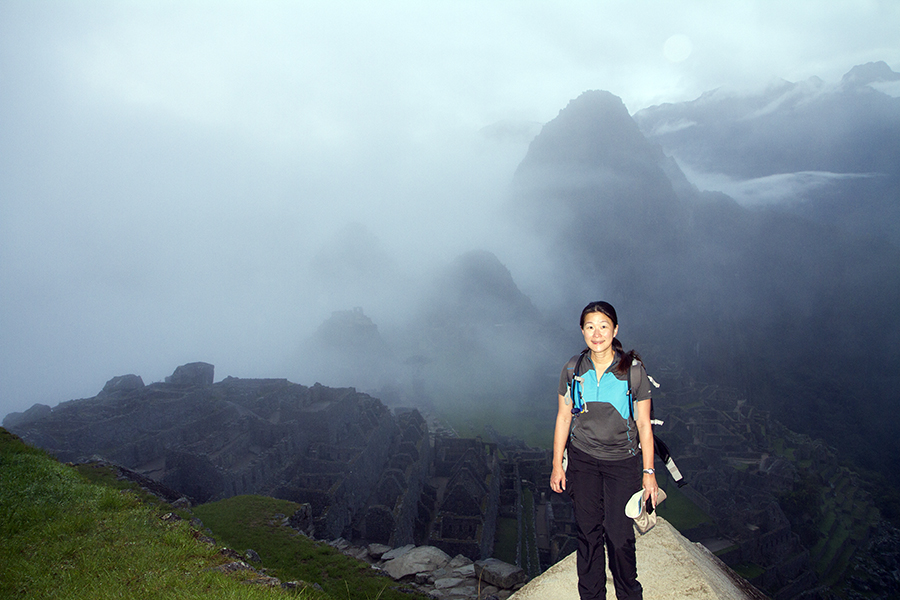
We are not alone! The llamas have been on their own for the whole night and have taken over the place, and now they reluctantly have to leave room for the tourists. They appear to be quite used to people.
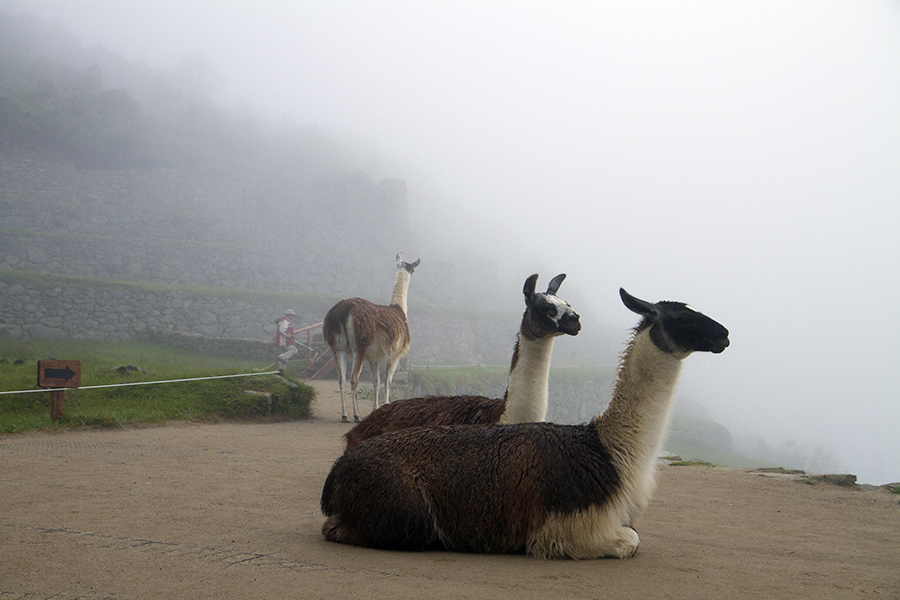
I am again able to take pictures close up. The clouds are still dense and therefore I need to pass the time.
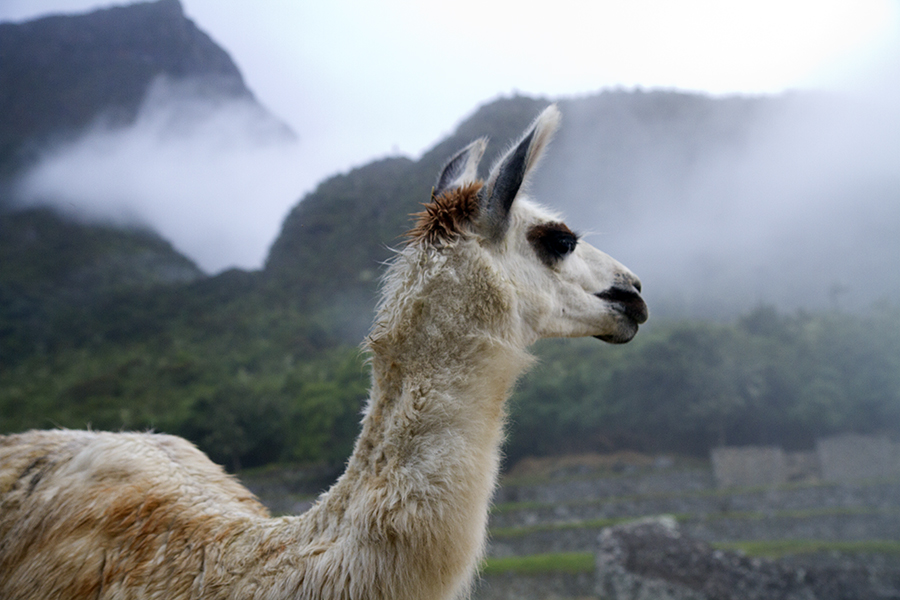
We have a good spot, up on top of the ruins with a plunging view. We have such a good spot that there is this lady who is doing everything she can to take it from us… for the hour that we were there, she moved her tripod 5-6 times, constantly looking at me with this accusing look. She has Nikon, so I felt no obligation to share my spot, until I was done with my photos.
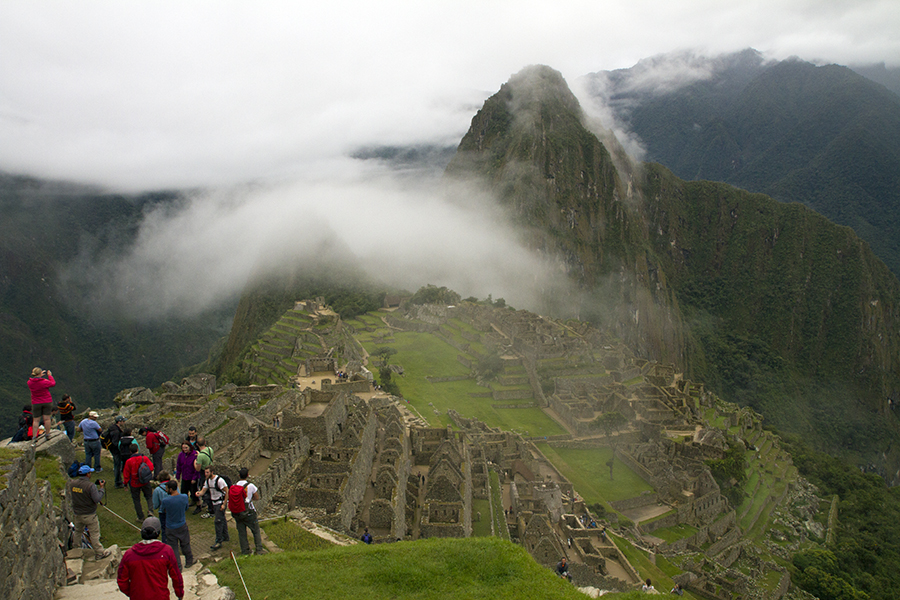
The sun came up behind the clouds – so no spectacular sunrise and I finally let the lady have the spot she wanted for her tripod. Bee and I went exploring briefly before breakfast and before the hordes of other tourists arrived.

We found a two-floor dwelling. It does not look like there was room for a staircase inside, so probably one had to go outside to get to the top floor.

Yes, you are sseing things correctly – Bee is floating up in the air in this photo. When I took her photo, I unfortunately cut off her legs, and therefore when I added her to the montage of the house, the legs did not appear – sorry! I still think it was worth having her in the picture.
We stopped at the Temple of the Condor. If you look carefully, the triangular rock on the bottom of the temple has been carved to look like a condor, with a small head closest to the camera.

Here is a closeup of that condor.
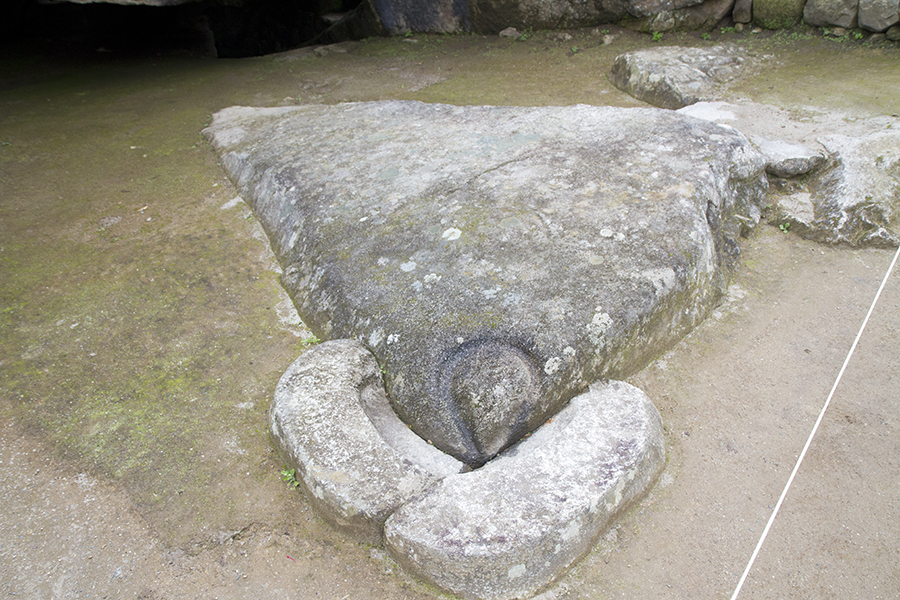
We came back to our room just before breakfast only to find a bird that was very much angry at his reflection in the mirror. It kept flying into it and pecking at the mirror.
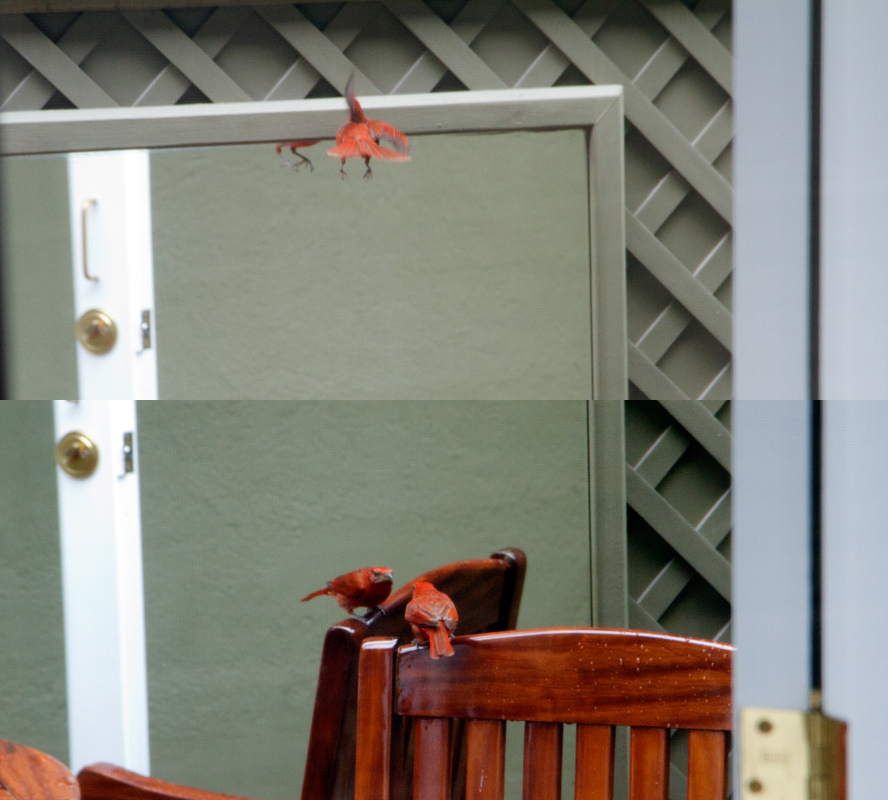
We went back into the ruins after breakfast as we had a guided tour. Here you can see the clear difference between the high class building, such as the Temple to the Moon above and the normal buildings such as the granary in the foreground. They spent a lot more time and effort getting the stones to fit just right for the important buildings.

I call this the “Parade Grounds” even though that is clearly not what it was for. My understanding is that archaeologists are not quite sure themselves what this space was intended to be used for. There are several theories.
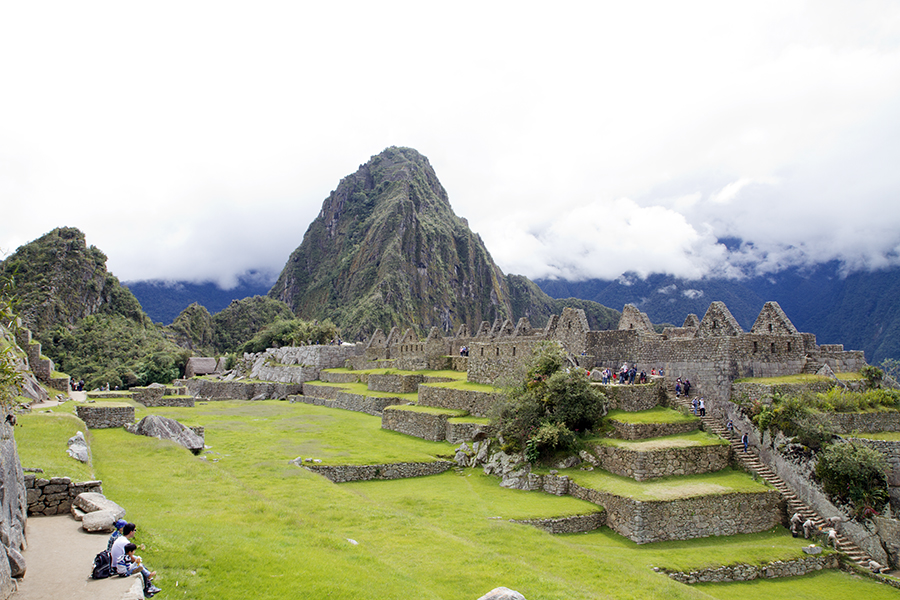
Quite a nice bird hidden among the branches.

El Templo de las tres Ventanas – the temple with three windows. Absolutely stunning brick-work.
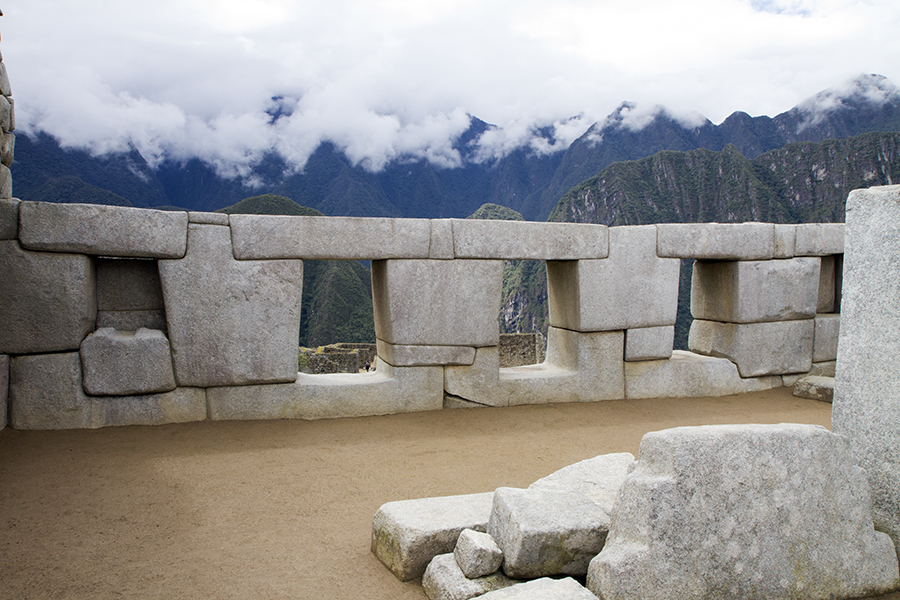
There was a maintenance crew busy on one of the temples. We were impressed with the safety features that they used to do this work. The crew seemed to be quite well organised, and I guess I was not expecting this.
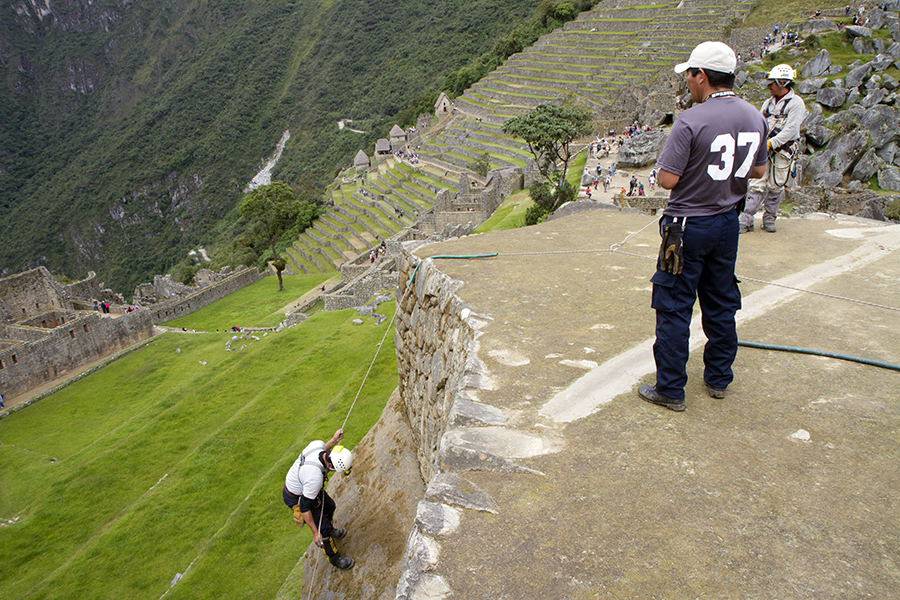
The Osservatorio Astronomico, or Observatory – where the local Inca priests would look at the stars and planets to determine the season and if any serious event was about to happen. It is told that the Incas could predict Solar Eclipses and the arrival of comets. It probably took many years of observations to get there.

As I have shown before, we ran into several groups of young children, sometimes very young, hard at work practicing dances. Here is a group in Aguas Calientes, the town at the foot of Machu Picchu. We had a few minutes to kill before the train that would take us back to Ollantaytambo and eventually back to Cuzco – the Inca trail and Machu Picchu adventure is over.
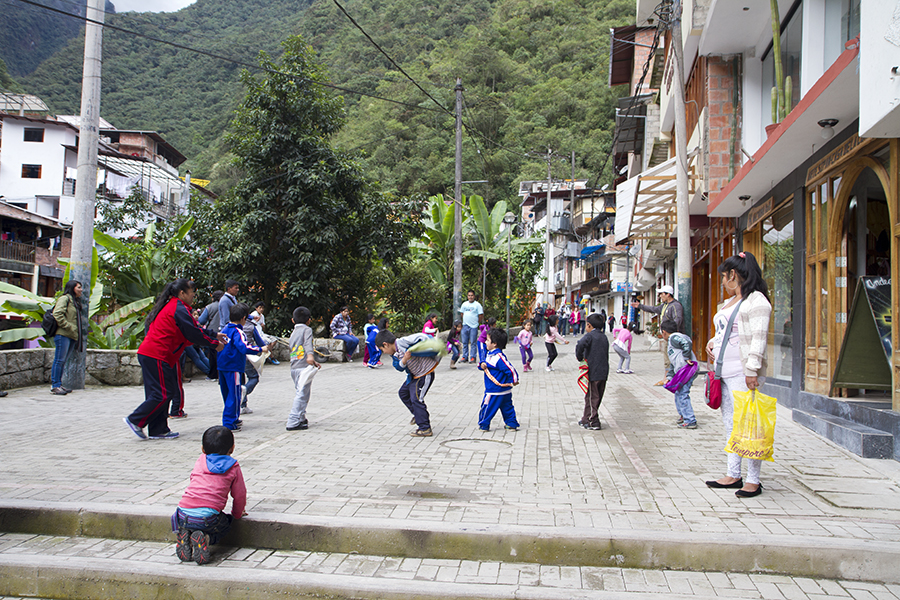
On to the next one! Very early the next day, we boarded one of the highest train in the world. The train that goes from Cuzco to Puno actually crosses a pass at over 4300 meters above sea level.
This is a luxurious train for tourists only. The bus is much quicker, but a lot less glamorous. There is an observation deck at the back of the train.

and a full service bar
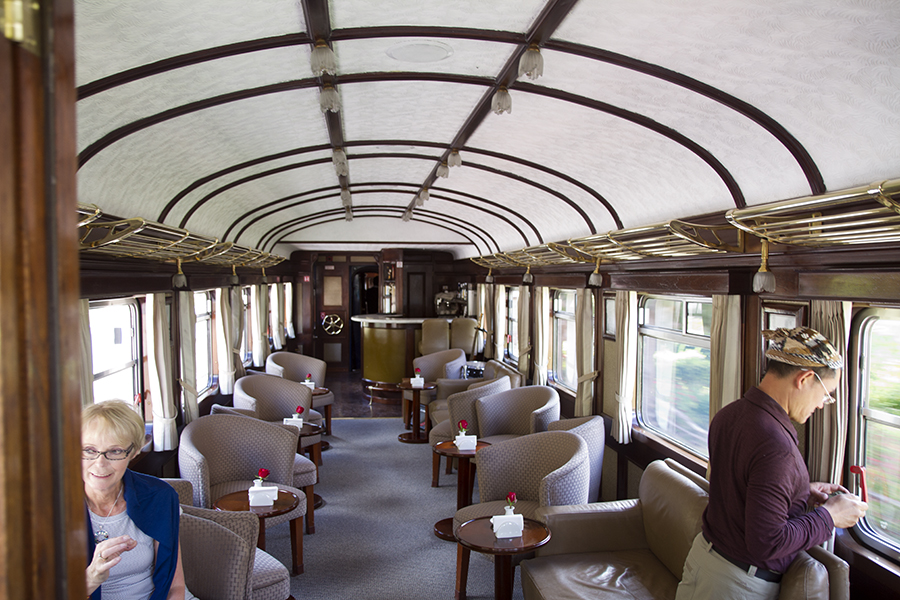
which is used for some entertainment during the long (8-hour long) trip. These guys were actually pretty good and at times, the four of them would play 8 different instruments!

We stopped in La Raya, the top of the line at 4313 m. An opportunity to stretch our legs, and buy goodies offered to us.
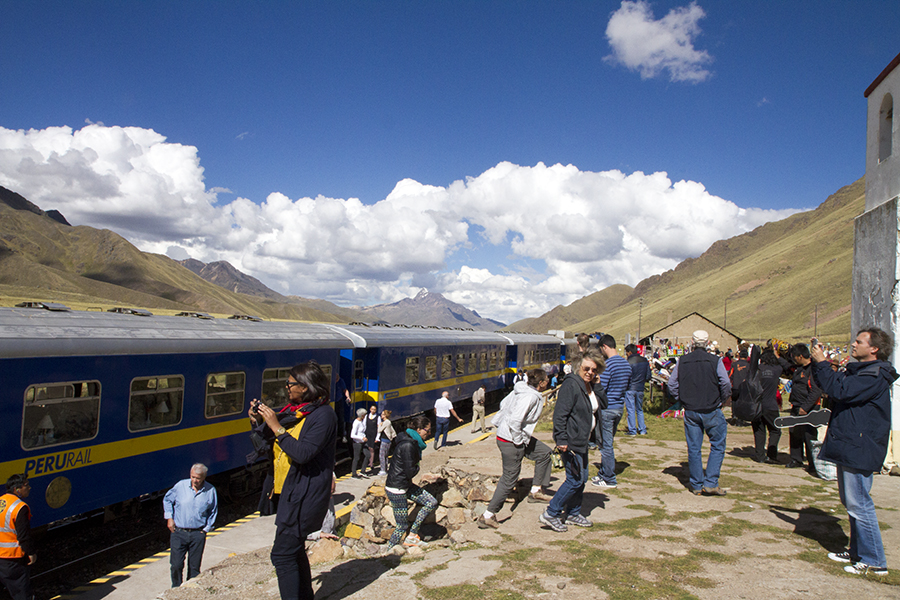
Desolate scenery – there is quite a bit of snow here in winter, I was told. Today, it is quite warm.
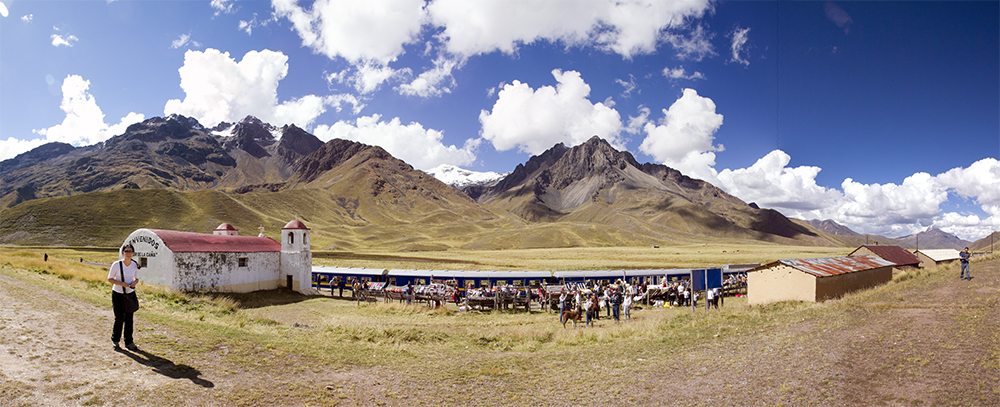
There are Incas with a baby Alpaca, charging for having your picture taken with them.

Back in the train, there is another musical session with the band.
They also had a fashion show and dancing girls.
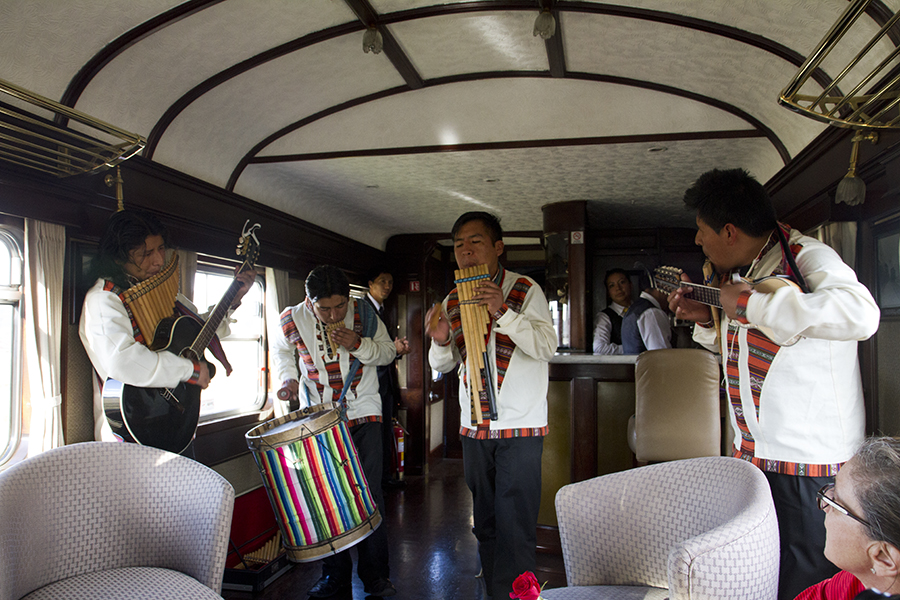
We arrived at the hotel just after sunset – this is the view from our hotel room. Lake Titicaca is right there.
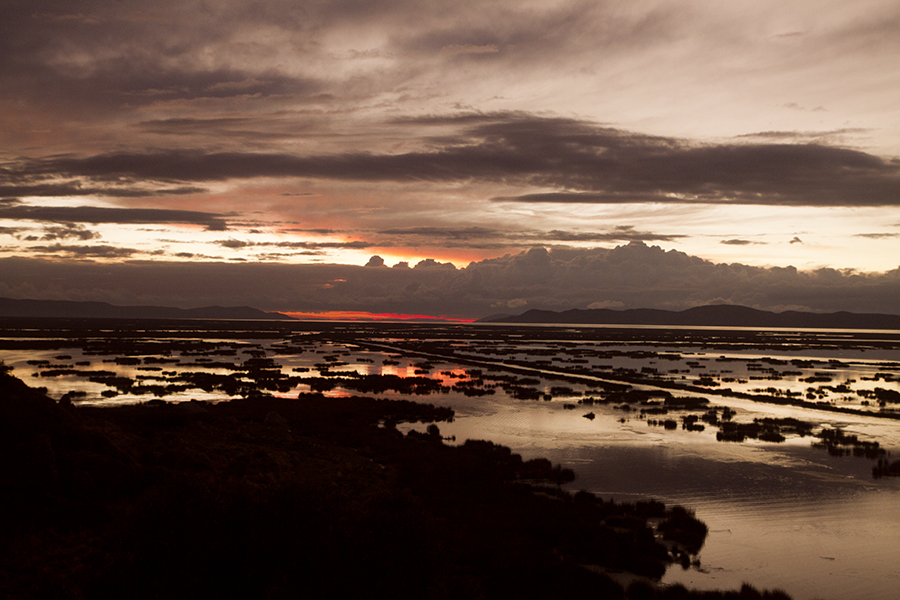
The next day, we went to visit the “floating Islands” that Lake Titicaca is so famous for. I was very surprised to find out that these islands have only existed for a little over 80 years! Before that, families would live on rafts and join together in this way. However, the rafts needed to be re-built every 6-8 months and this was a lot of work. The islands (there are over 80 islands in this area and each island is essentially one family) last 2-3 years and therefore there is less work than before.

They still build boats to move from one island to the next – this is one recent example. They are manually operated with long oars. We had the opportunity to go on a ride, but declines as it was way (WAY!) too touristy for us.
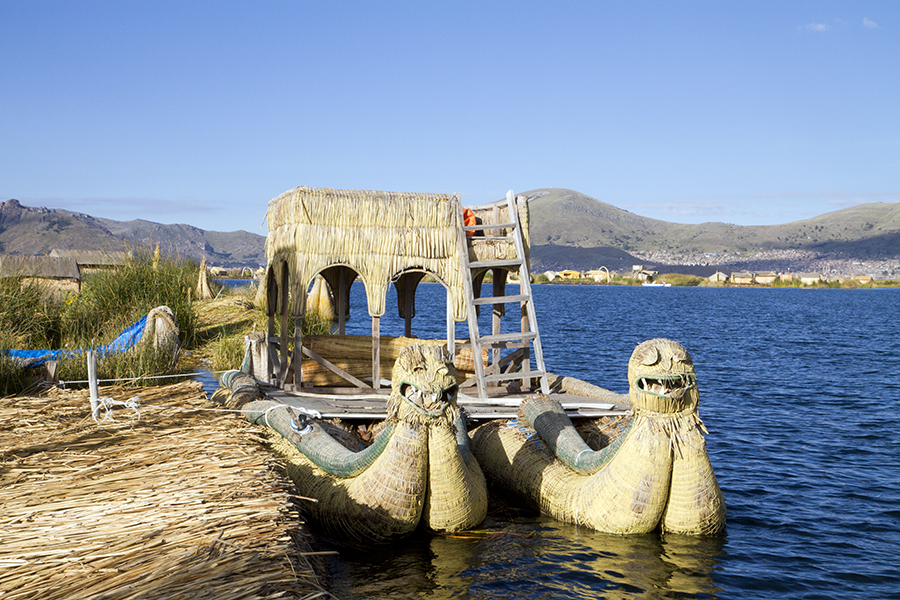
We enjoyed spending more time with the local Uros (the indigenous people who occupy these islands) such as this old gentlemen who demonstrated to us how they build these islands. The actual flotation devices are the roots of the local reeds which they pull from the bottom of the lake (which is not very deep in this area). Dried reeds are used as the top platform, and makes for a very bouncy support. I am sure these guys never have knee problems!
The Uros are a very old people, actually pre-dating the Incas. Most of them live in Peru, but some are still located on the Bolivian side of Lake Titicaca.
Each member of a group living on an island is responsible for the maintenance of his section of that island. Our friendly instructor explained that there are severe penalties against those not carrying their own weight, including one that involves a very large saw and actually a complete separation of the offending party from the rest of the island – they are cast adrift to be on their own!
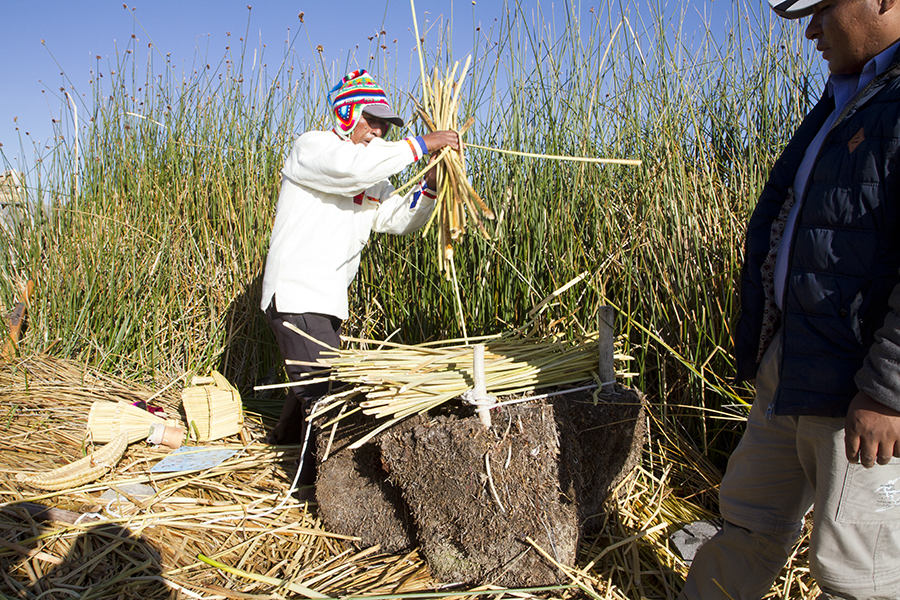
Houses are simple structures, usually just one room. Most of them do have televisions, not flat screen TVs yet. I am not sure what is the purpose for the tire on the roof, but in this case, it supported a very nice parrot.
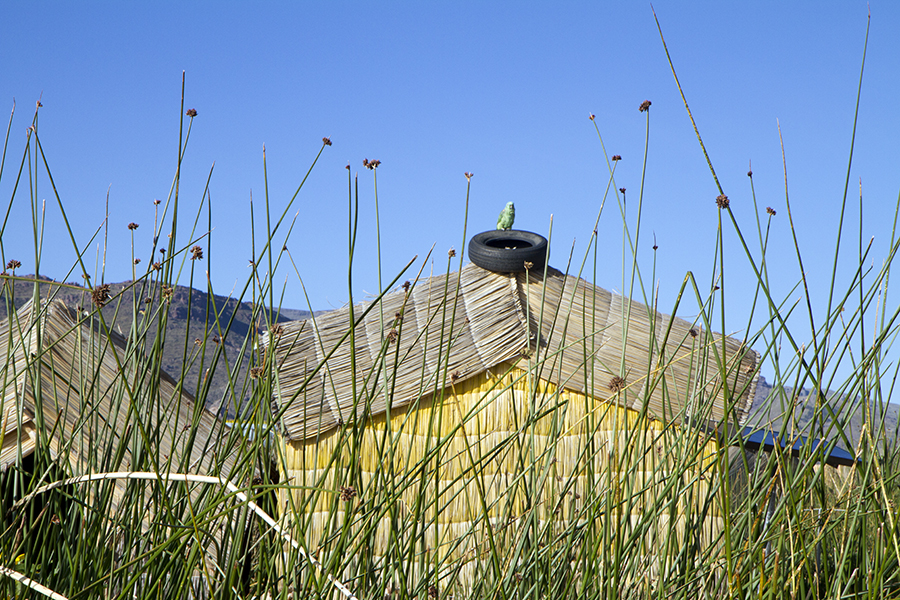
The gate at the entrance to the main square of the island we visited. All houses are built around the main square.
The community is essentially self-sustaining. There are special islands with schools up to secondary school and some islands have restaurants and bars for entertainment (probably mostly for tourists again).

We were able to get onto an elevated platform (this was scarier than I thought at first as the platform was not very stable and built on nonexistent foundation on top of floating and unstable reeds). However, this did provide a remarkable general view of some of the area where these islands are built. There are two main sections, with a wide canal between these where you can see a motor boat. Each section is made up of multiple small islands that are very close to each other, but still separated – if you look at the two yellow buildings to the left of the picture, there is probably a separation (narrow channel) between those two houses. There is also a channel in the foreground of the picture so we are looking here at the island next door to the one we are standing on.

After the floating islands we continued our crossing of the lake towards a more permanent island, seeing local fishermen on the way.

We stopped in Taquile where there are other local people known as the Taquilenos – they speak Quechua, while the Uros speak Uro or Pukina. This was obviously a VIP – I saw him later in deep business-like conversation with local people.

Local weaver

And of course, a dance troupe for the tourists. Clearly not what we were most interested in. Before that, we had a demonstration of how they can make soap from a local herb. Remarkably, we had a demonstration by a local aboriginal near Perth Australia in January 2016 that looked eerily similar!
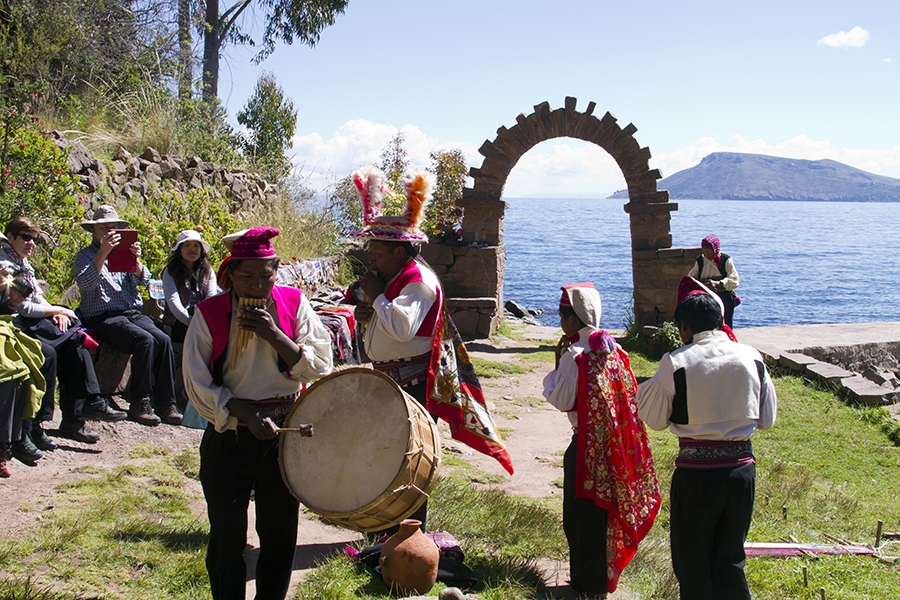
Taquile is an agricultural island with many terraces where different foods can be grown. There is no lack of water, even though it does not rain very often.

We spent our next night on a small private island near the Bolivian border, but still on the Peruvian portion of the lake, so I cannot claim that I have visited Bolivia. The only thing on the island called Isla Suasi is the hotel where we are staying.
There are no inhabitants, but there are Alpacas that do not appear to be very afraid of humans.

This one Alpaca seemed to really like the purple flowers in this one bush
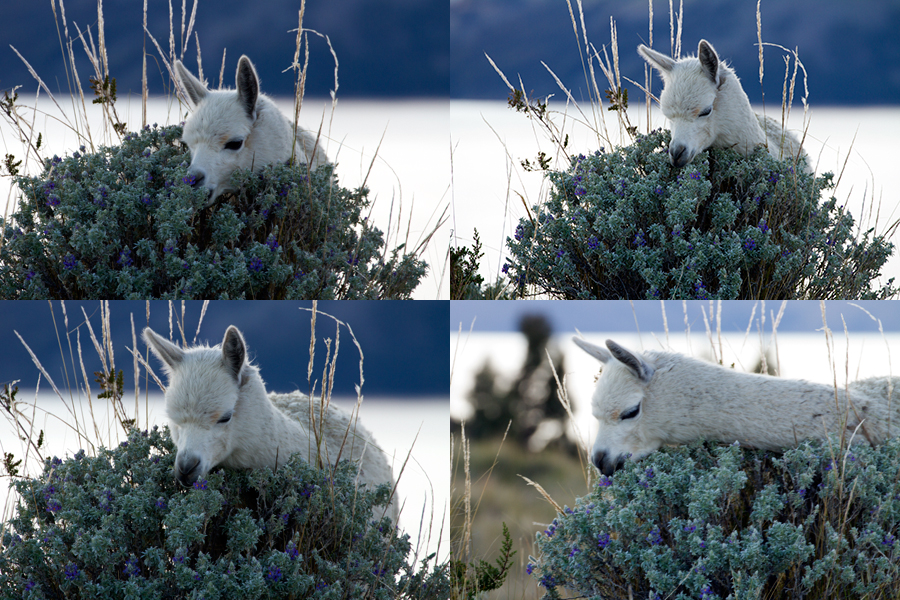
Who can resist that!
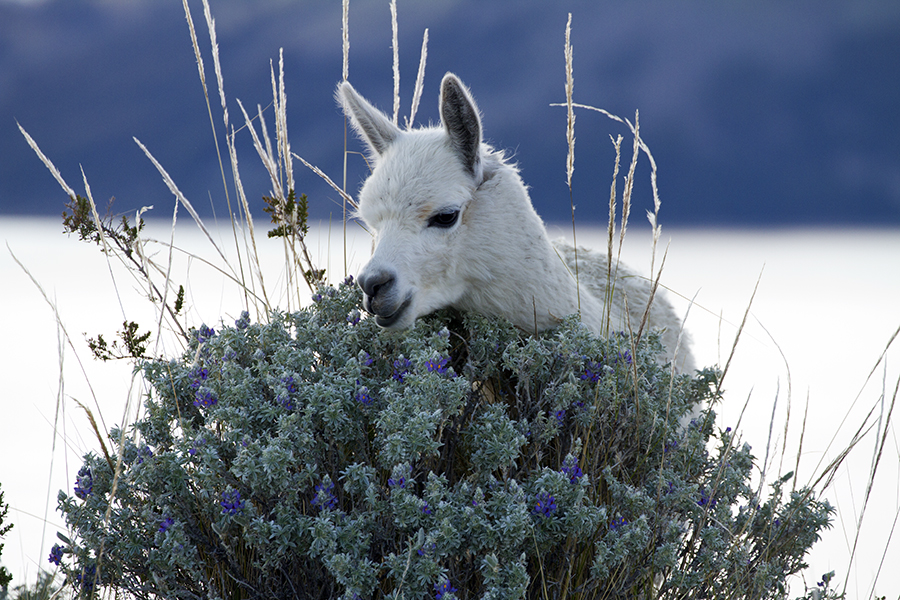
We went to the top of the island, at 4100 m altitude, to watch the sunset. The walk was not very long, only about 2 km, and we only climbed 200 m, but we were still out of breath at the top. I took several pictures while the sun was coming down.
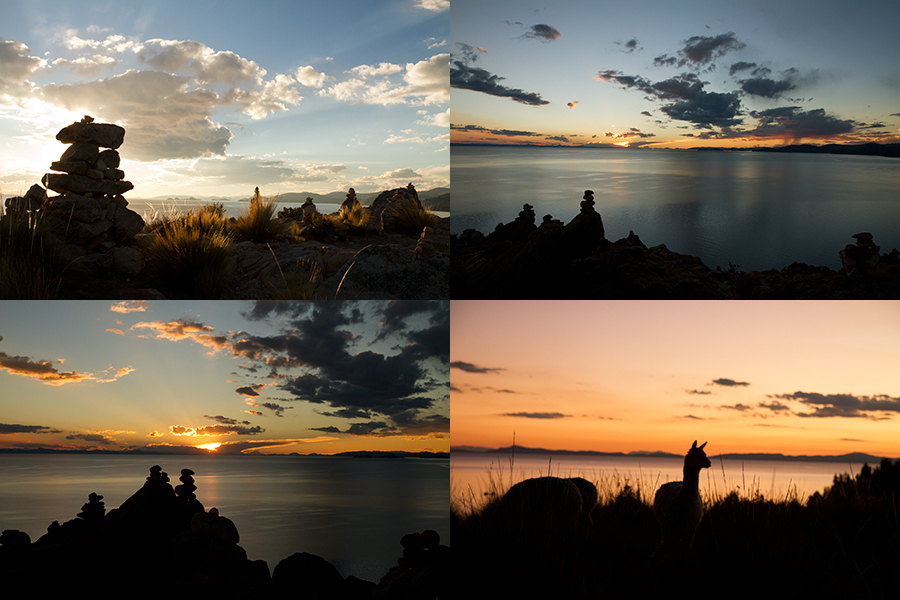
As always at this latitude, once the sun is down, dark arrives very fast. We had to hurry to get back to the hotel, but still had time for this picture. Bee was trying to distract the Alpaca so that I could get a profile shot, and it worked.

The next day, we will be leaving the island and soon will be leaving Lake Titicaca for Arequipa. That will be the subject of the next episode as I have not yet worked on those photos and do not want to delay further the publication of this one.
(652 Page Views)
